In this article we’re sharing some helpful New Zealand travel tips we wish we would have known before our trip. Plus, some fun facts about New Zealand that’ll give you a deeper understanding about its history, people and culture.
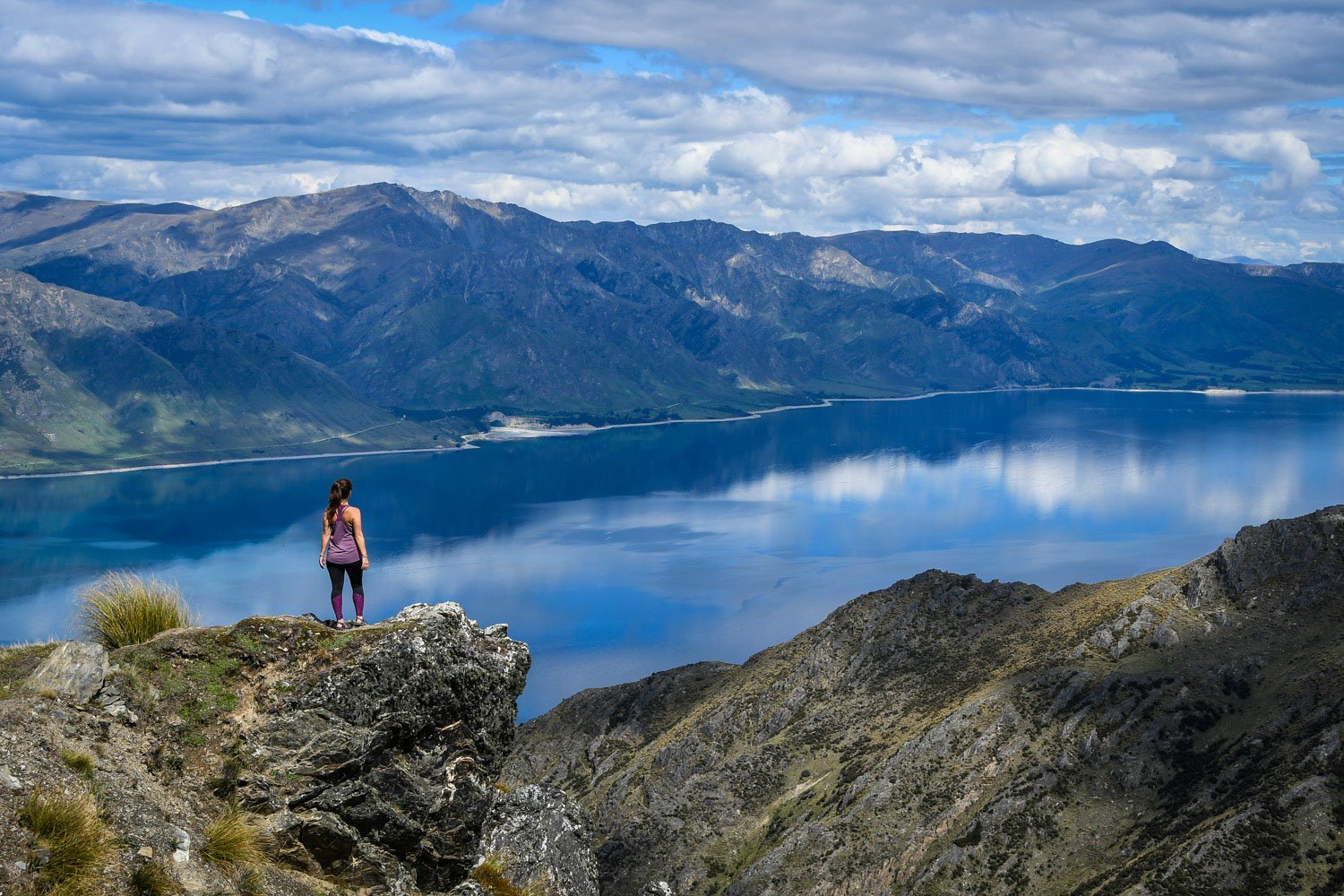
New Zealand is a country we’d been itching to visit for years. I mean, it’s hard to find many other countries in the world where you have so much beauty and adventure packed into one compact space.
We spent 5 weeks traveling around New Zealand by campervan, and had the time of our lives. We hiked mountains, bathed in hot springs, drank wine (lots of it!), slept in mountain huts, and relaxed on the beach.
However, I will say there were a lot of things that surprised us about New Zealand. Some things were good surprises, like golden kiwis (yum!). But other surprises were not so delicious…
For example, we had no clue just how awful the Internet in New Zealand would be. And we weren’t quite prepared for all the Kiwi slang… What are they even saying?!
We had a fantastic time traveling in New Zealand, and our trip would have been even better if we had known a few things in advance.
We want to make sure you are totally prepared and know what to expect so we’ve compiled our top New Zealand travel tips based on our experience. Plus, we’re also going to share some fun facts about New Zealand that will make your travels even more special.
New Zealand Travel Article Contents
- Preparing to enter New Zealand
- Helpful things to know before traveling to New Zealand
- Fun Facts about New Zealand
- New Zealand travel planning resources
Want to save time and energy on planning?
We spent 5 weeks traveling around New Zealand in a campervan, and we’ve been lucky enough to explore a lot of what this country has to offer!
We took our 5-week travels and condensed it down to 30 days (because so many people wanted a 1-month route) that hits the top destinations on both the North and South Islands.
We’ll send you our complete 1 month itinerary, filled with tips and advice. Just click below to get your 30-day New Zealand road trip itinerary today!
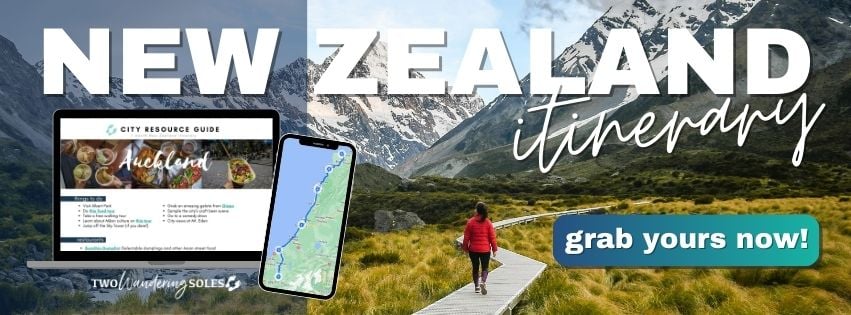
Preparing to enter New Zealand
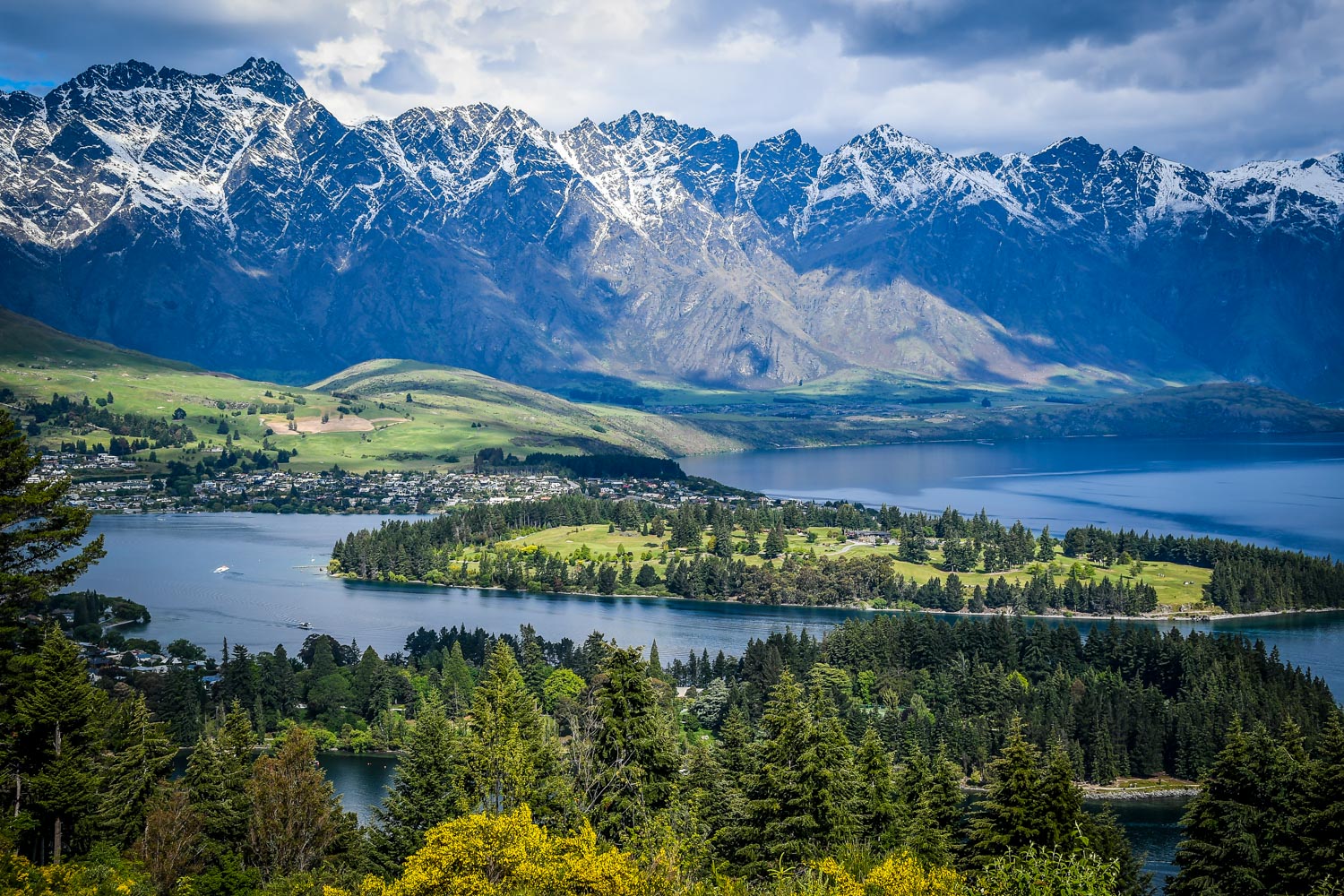
Before we share our helpful New Zealand travel tips and fun facts, there are some administrative things you need to know before traveling to NZ.
Visas/Documentation needed to enter New Zealand
Okay, so they don’t exactly call it a “visa”, but as of October 1st, 2019 you need to pay to enter New Zealand. Please apply on the New Zealand Government website or using their free mobile app.
The two fees you need to pay before entering NZ are below. You can take care of both of these fees by following the link we provided.
New Zealand Electronic Travel Authority (NZeTA): cost $17 NZD on the official app or $23 NZD on a browser.
International Visitor Conservation and Tourism Levy (IVL): Costs $100 NZD for each person entering New Zealand. The fees will be put toward conservation of New Zealand’s land and nature as well as tourism infrastructure. Citizens of Australia and some South Pacific Islands are exempt.
Helpful New Zealand travel tips & advice
We’re sharing some super practical things that we wish we would’ve known before our trip to New Zealand!
1. Learn to speak the language
In New Zealand the most commonly spoken language is English… Kiwi English, that is.
For the most part you’ll have no problem understanding locals. But every once in a while, you’ll come across a word or phrase that leaves you scratching your head.
Good to know: Though English is the most widely spoken, there are 3 official languages in New Zealand: English, Māori and New Zealand Sign Language.
Here are some common “Kiwi words” or phrases you may encounter on your travels:
- Kia Ora= Māori word for “welcome”
- Togs= swim suit
- Chilly Bin= cooler
- Sweet as= “that’s cool”
- Dairy= local convenience store
- Tramping= long-distance hiking; usually when you spend the night at mountain huts
- Jandals= flip flop sandals (the name comes from combining Japanese + sandals)
- Wop-wops= in the middle of nowhere (aka “We’re driving through the wop-wops now!”). Can also be shortened to just “wops”.
- Fizzy drink= soda
Oh, and while we’re on the subject, the names for fruits and vegetables may be different from what you’re used to.
Before you head to the supermarket, here are some names to know:
- Capsicum = bell pepper
- Aubergine = eggplant
- Courgette = zucchini
- Coriander = cilantro
- Kumara = sweet potato
- Rocket = arugula
2. Internet in New Zealand sucks!
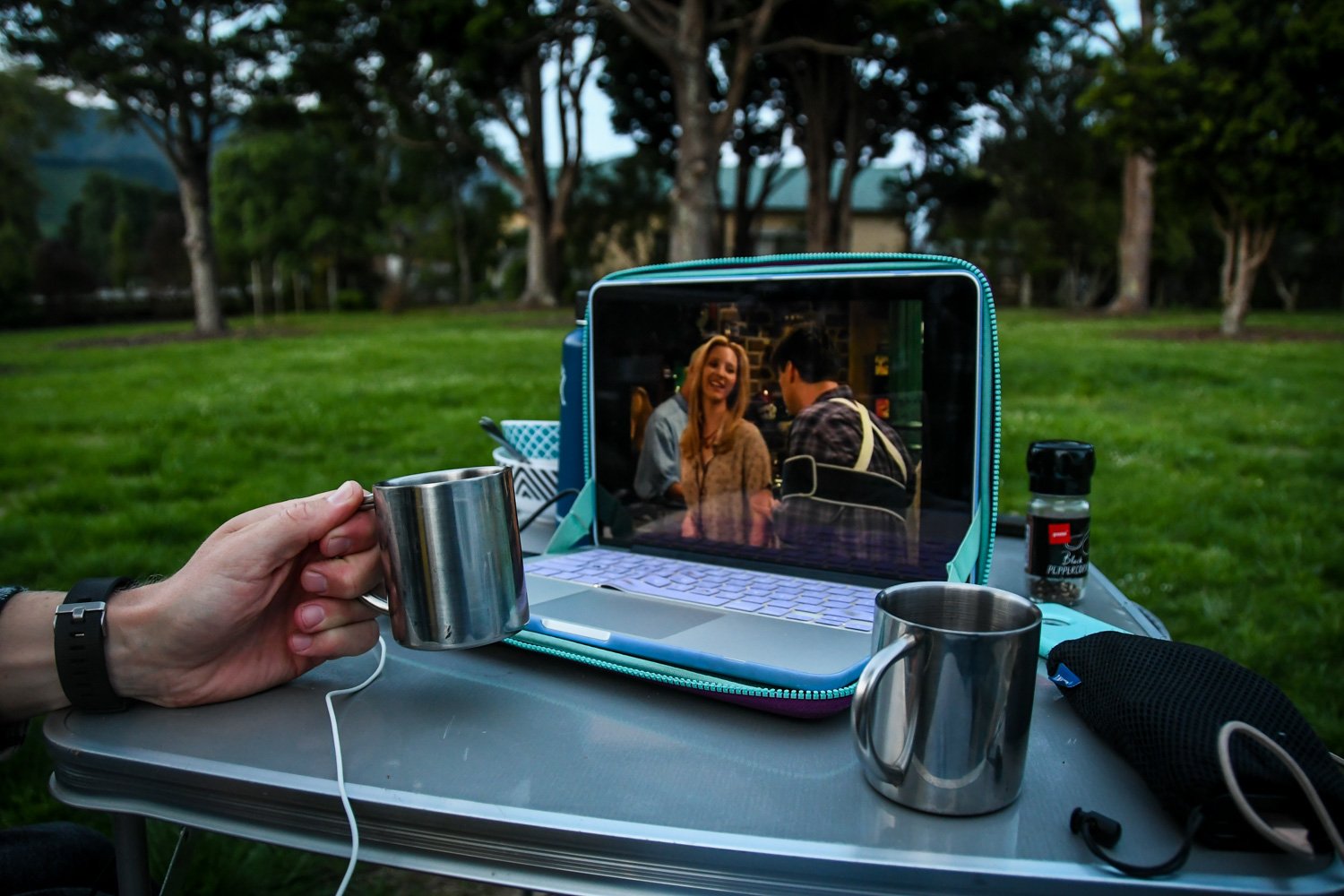
Okay, let me rephrase that… No, it actually does suck, so I’m sticking by it.
You might find cafes, hotels and campgrounds with “free Internet”, but they will likely give you a code that is good for 250 megabytes of data. For all you non-techie folks, that is NOTHING!
We also had a hot spot device and a local SIM card. But even when we did get connected, the speeds were nothing to brag about. Truthfully, we’ve found better service and speeds in several developing countries, so we were pretty surprised by New Zealand’s (lack of) Internet.
I will mention that New Zealand’s North Island has significantly better Internet than in the South (especially in major cities like Wellington and Auckland).
If you’re prepared for limited Internet in New Zealand, you won’t have too much of an issue. You’ll likely be able to do Google searches, get directions on Google Maps and post on social media. But we had difficulty uploading attachments to emails or loading files. We fell behind on some important deadlines because we simply weren’t prepared.
And when it comes to streaming videos… fogetaboutit! If you want to watch any Netflix before bed, be sure to download those before your trip!
3. Be prepared to go “off the grid”
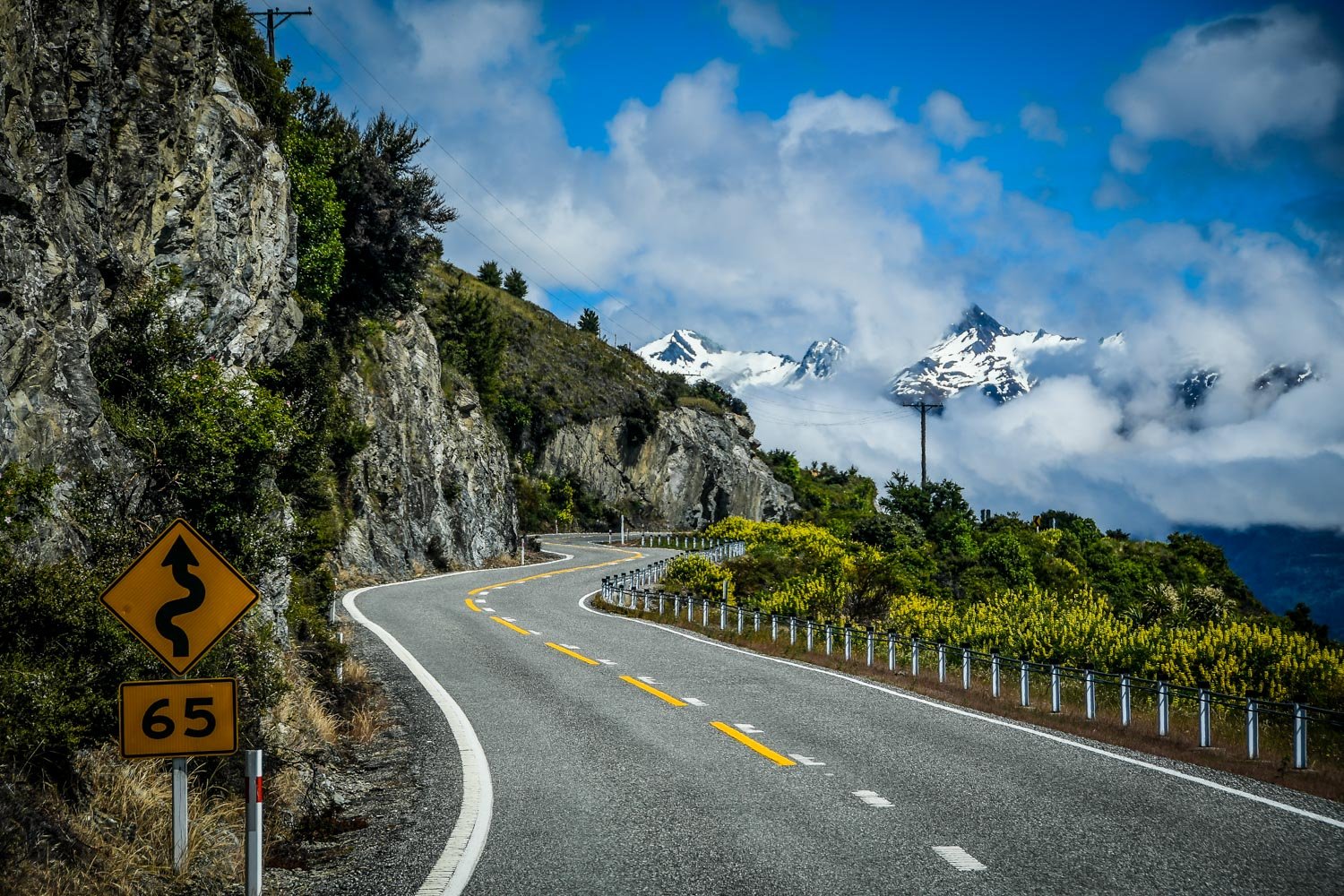
On a similar note, there are many areas where you will not get cell service (especially in the South Island).
I’m pretty sure there was an entire day on the South Island’s West Coast where we had no cell service at all!
Pro Tip: Be sure to download the Google Map of New Zealand on your phone as you’re planning your road trip so you have it even when you’re without cell signal.
4. Put on SPF
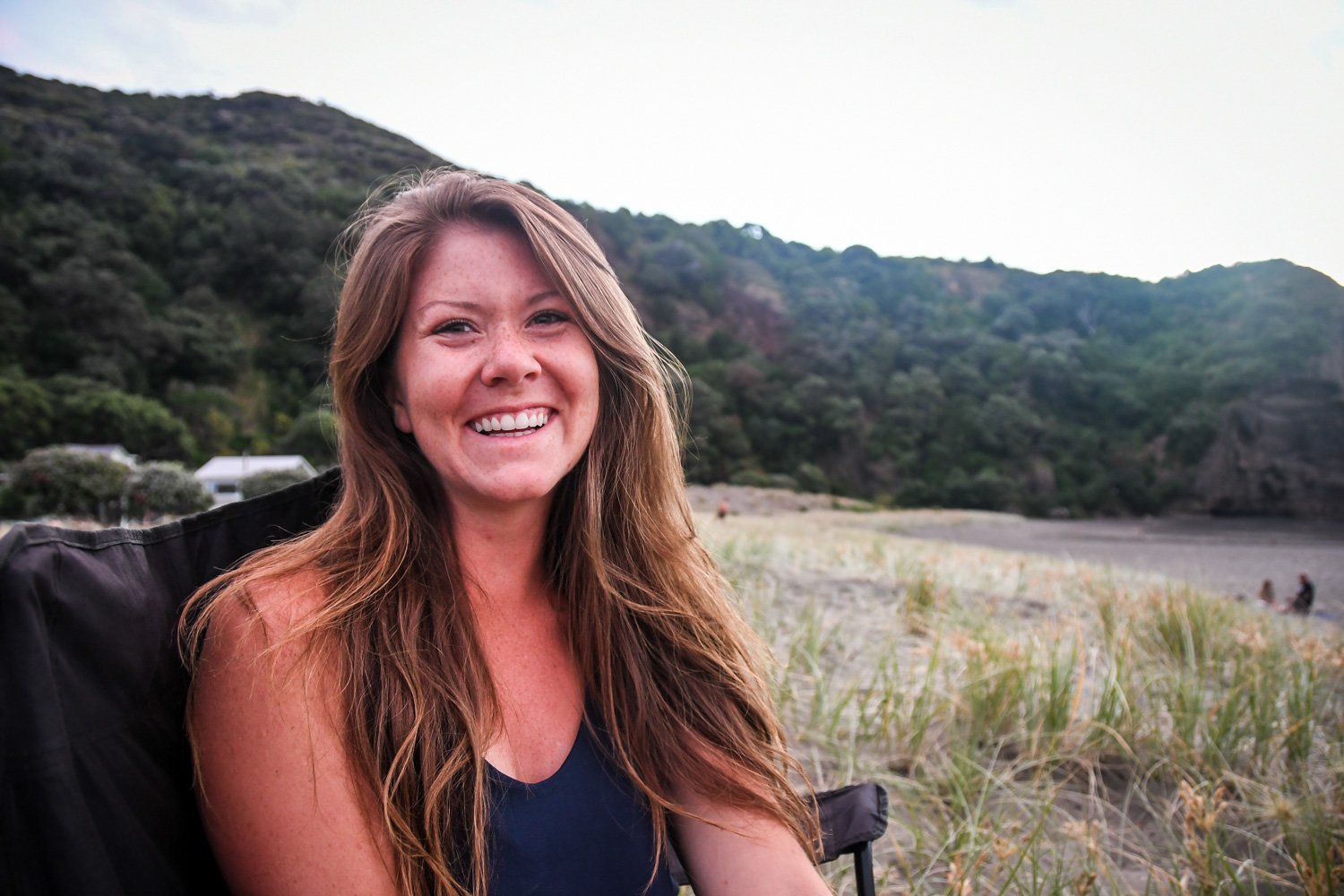
There is a hole in the ozone layer above New Zealand (and Australia), so the sun will burn you more quickly than you may be used to.
Even if it’s not sunny or hot outside, still put on a layer of SPF to protect your skin. After hearing one too many Kiwis telling us about their infamous “5-minute sunburns”, we made it a routine to slather up.
5. Customs are strict
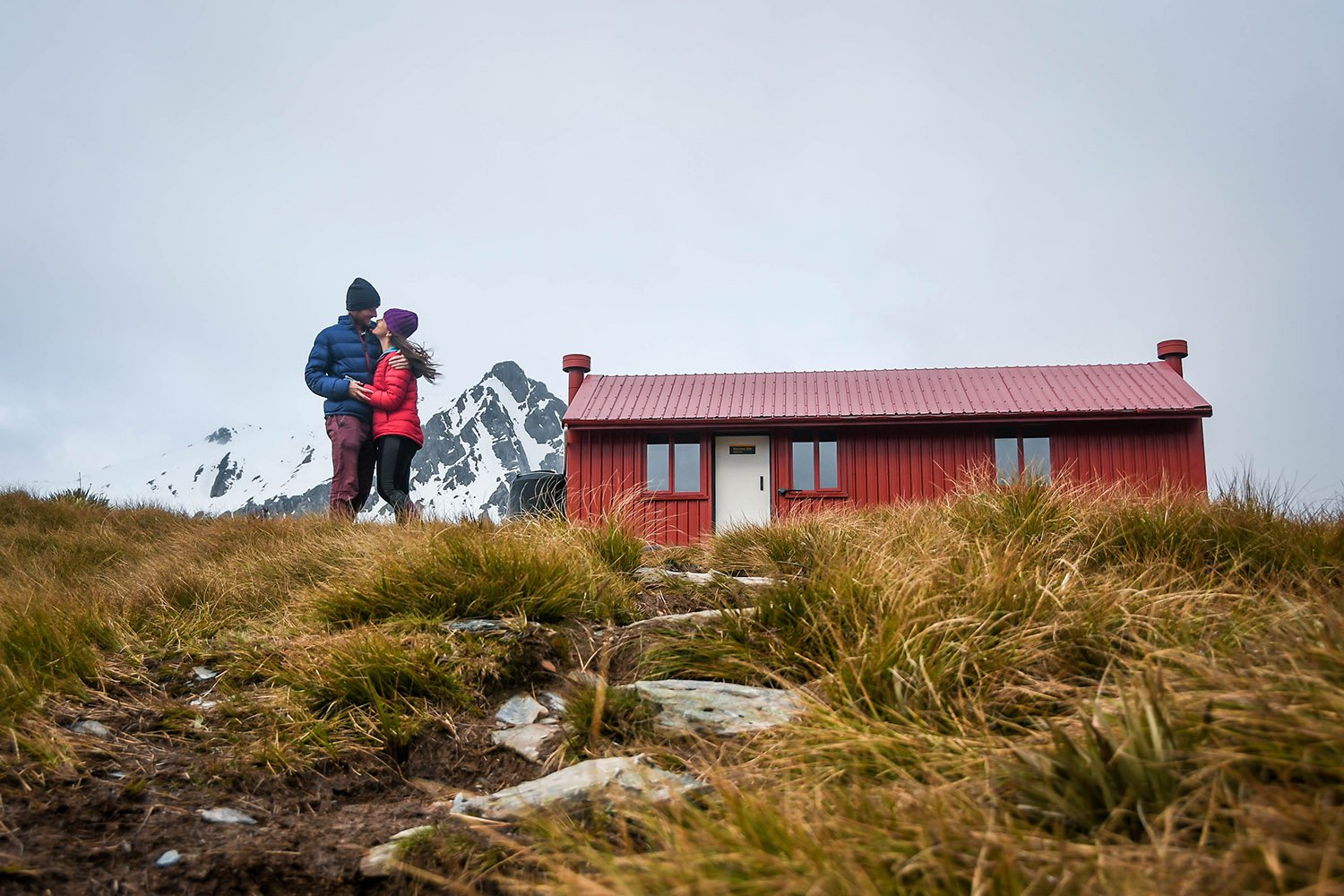
Like really, really strict.
One of the first things you’ll see when you get off your plane is signs everywhere warning that you’ll be fined if you bring any food into the country.
Basically, you can’t bring food into New Zealand.
So here’s the thing… We had packed some food that we thought would be good for camping meals: oatmeal, quinoa, cinnamon, curry packs, sea salt…
But when I saw a picture of an apple accompanied by the words “$400 fine”, I turned myself into the customs officer, worried I might be handcuffed for such a rebellious act. Only kidding… or am I?
She looked at me asked a few general questions in a monotone voice. “You’re fine. Keep walking,” was her response.
You are also not supposed to bring “dirty” shoes and camping gear into the country.
There are even signs posted informing you that dirty shoes are not allowed in the country. (We didn’t see anyone reprimanded for this, though they did ask us if we had “previously worn our shoes”.) And at some trailheads, there are cleaning stations for hikers to clean their shoes before entering.
Why all the strict rules?
It might seem a bit over the top, but New Zealand is an island nation with a fragile environment. There are many endemic plants that can be easily harmed when non-native species are introduced.
You’ve been warned. And now that you know the reason behind it all, please respect the rules.
6. Weather in New Zealand is crazy
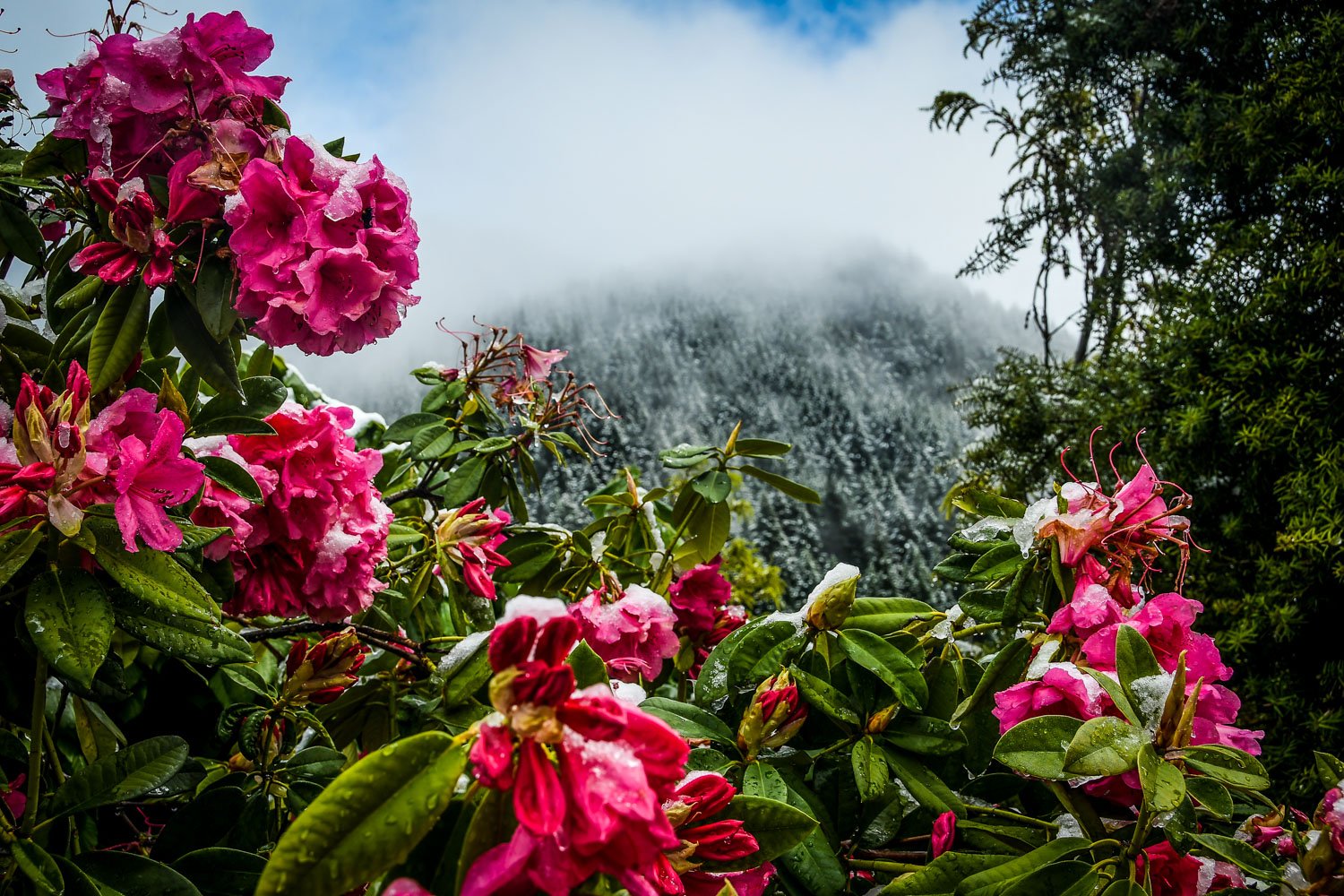
It changes often, and one town to the next can be totally different.
In just one day, we experienced snow, rain and sunshine. Be prepared by packing lots of layers and a rain jacket.
And be sure to add some “flex days” into your itinerary because a surprise rainstorm might mess up your plans. We speak from experience.
Psst! For an in-depth guide on the seasonal weather patterns and other factors, check out our complete guide on the best time to visit New Zealand.
7. Travel by campervan
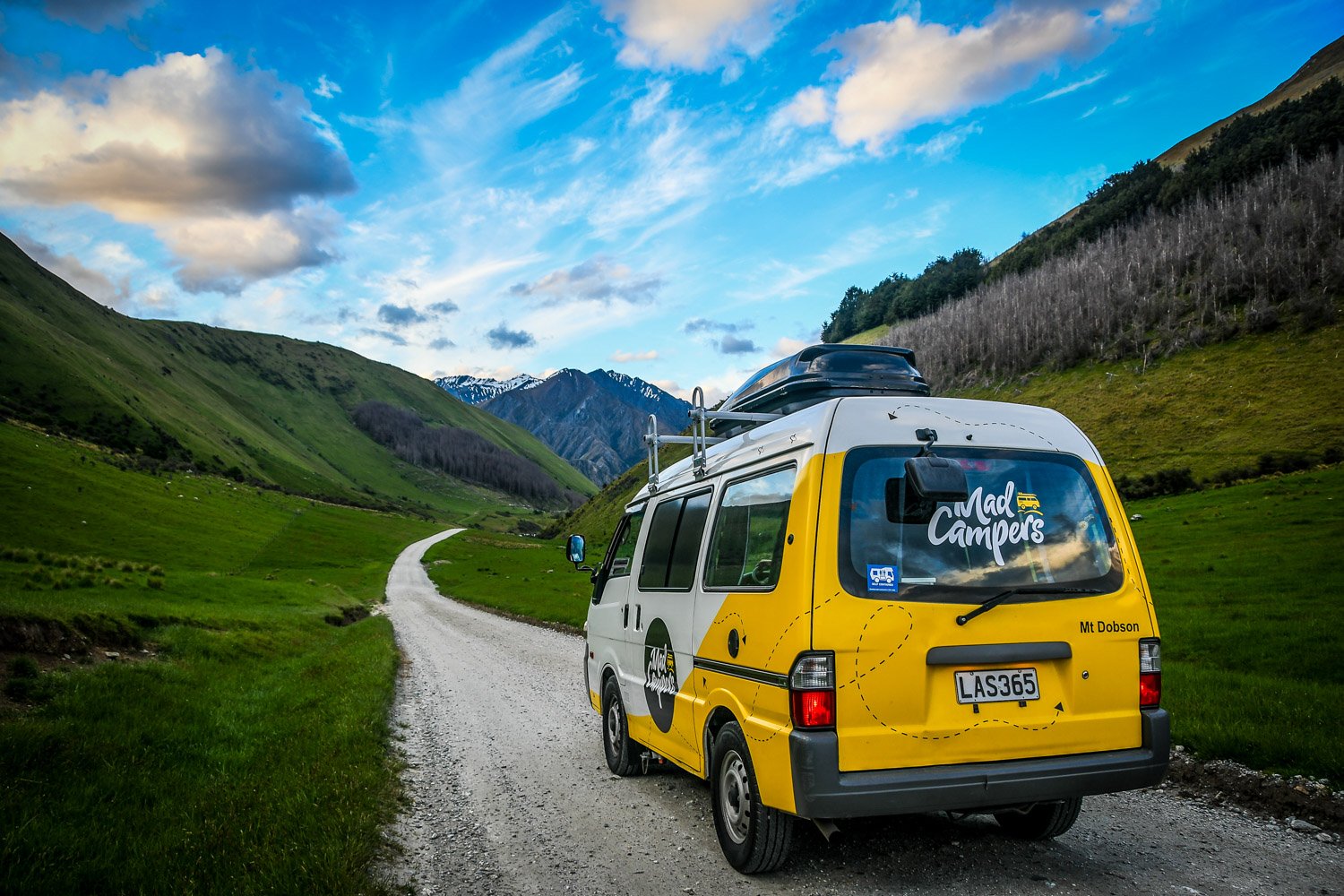
The secret is out: Traveling by campervan is unarguably the best way to explore New Zealand. There’s just so much more you can see when your home is on wheels.
Plus, if you’re on a budget, you will have the opportunity to save money by cooking your own meals and freedom camping.
Insider Tip: If you’re looking for campervans in New Zealand, check out this article where we compare the best companies in the country to help you find the best vehicle for your budget and needs.
8. You can camp for free!
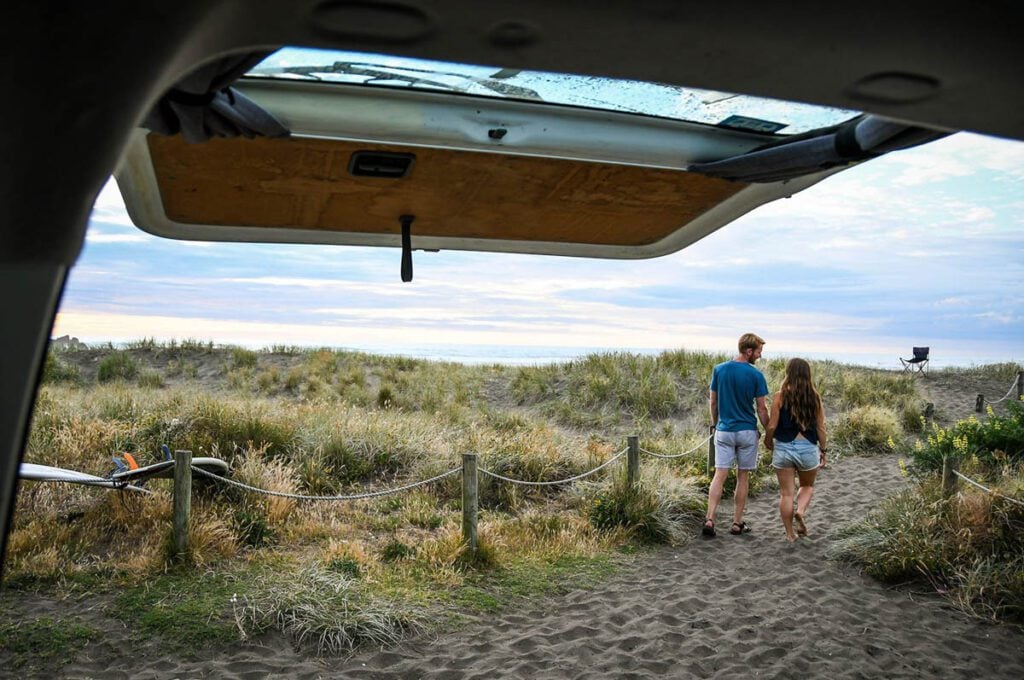
If you’re traveling New Zealand in a campervan, you can camp for free in many places throughout the country. Freedom Camping is a great way to get off the beaten path and also save money!
There are free campgrounds and also regions where you can simply find a place to park and set up camp.
Note: You need to have a self-contained vehicle. Read up on the rules on Freedom Camping.
We’ve put our heads together with fellow travel bloggers and came up with a list of the best campsites in New Zealand, some of which are free! It’s a good resource for anyone looking to do some campervan adventuring in this country.
9. Add time to what Google Maps tells you
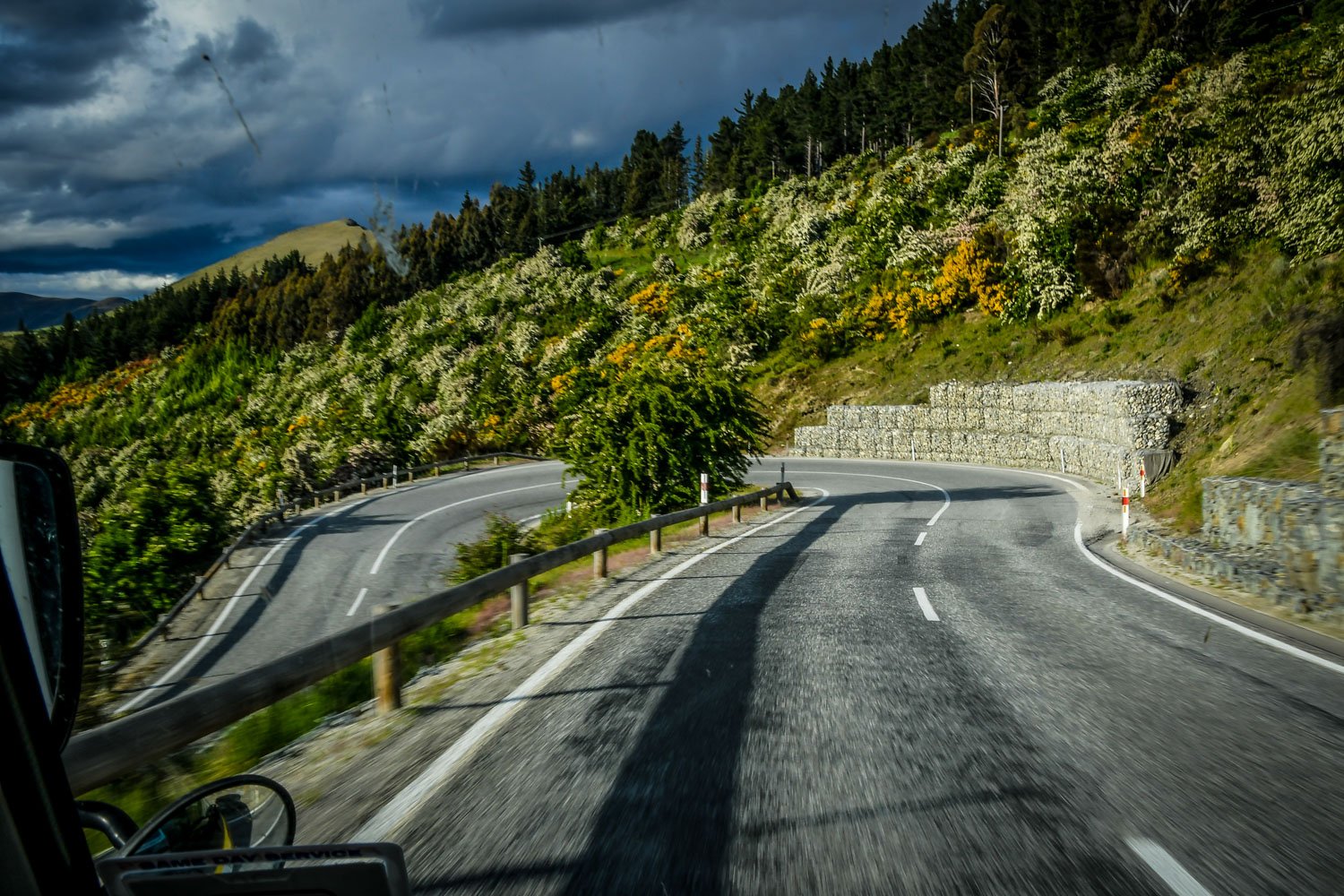
Seriously, do it. Google knows nothing (when it comes to NZ roads)!
Roads tend to be quite narrow and in many places in the South Island, there is only one lane in each direction.
Take into account the hairpin turns, one-lane bridges, gravel stretches and steep mountain passes, and you’ll understand why it takes longer than you’d expect to drive just about anywhere.
And that doesn’t even set aside time for all the gorgeous viewpoints where you’ll want to stop. They are everywhere, I tell ya!
10. Let people pass you
When you’re driving in New Zealand, it’s a law to pull over (when safe) if there are more than 4 people backed up behind you.
Locals can (understandably) get a bit put off when they are stuck behind large campervans, and you might get some tailgaters.
Don’t let it get to you – just pull over at the nearest safe spot and allow those behind you to pass.
11. Beware of one-lane bridges
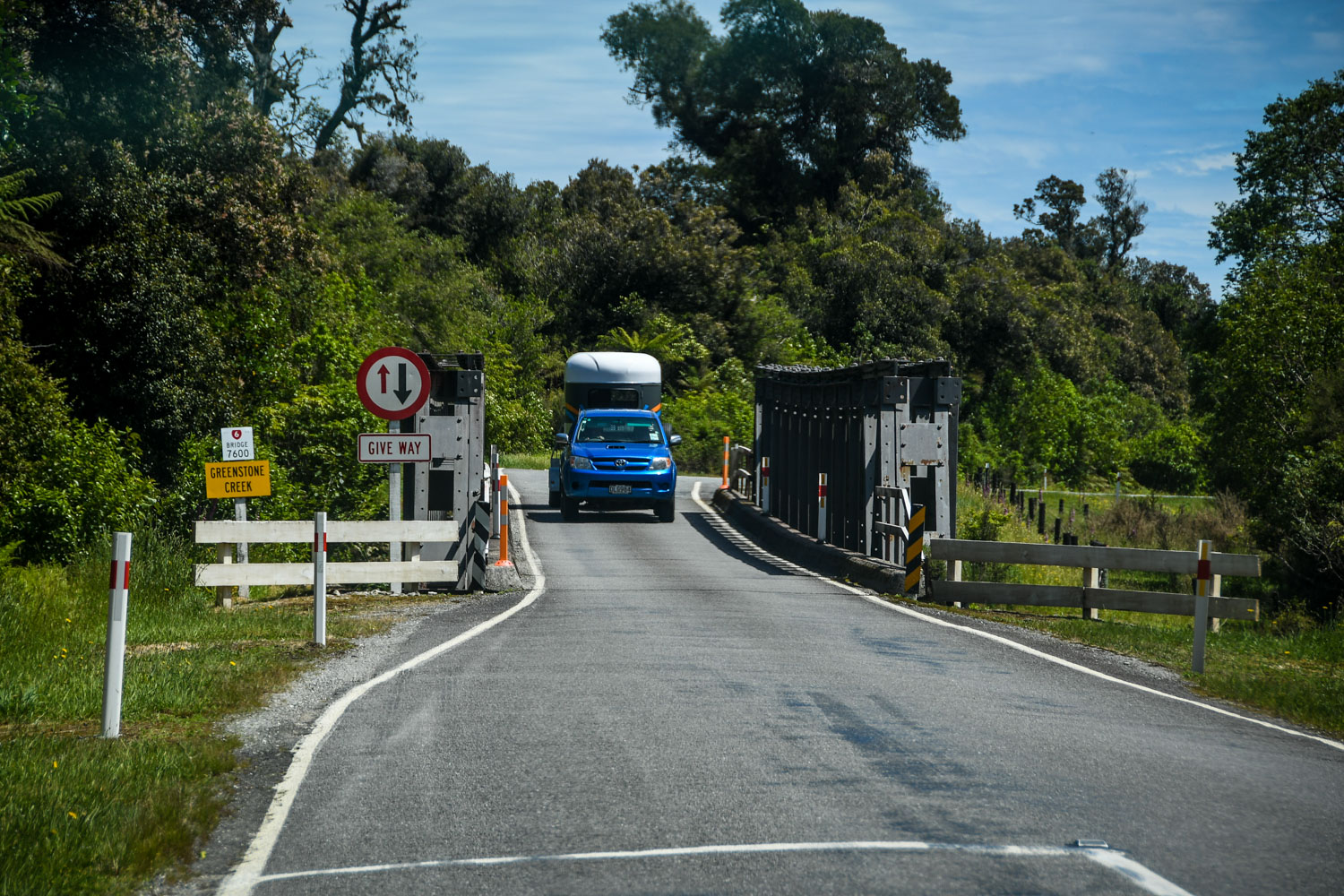
Hopefully you’re already aware that in New Zealand people drive on the left-hand side of the road. We were prepared for this, but what we weren’t aware of are the one-lane bridges.
Most bridges you’ll find around the country are only big enough to let one vehicle cross in either direction.
When you approach a bridge, make sure to slow down and read the signs — typically it indicates which side gets the right of way. But it’s always a good idea to be prepared to yield in case the other driver isn’t being cautious.
12. Gas is expensive!
New Zealand is known to be notoriously expensive. But honestly, there are many things that surprised us. Groceries, for instance, were quite similar (if not a bit cheaper) to what you’d find in the United States. Definitely not as bad as we were expecting.
But gas is another story. It’s hella expensive. (Did I just say hella?)
The gas station signs are a bit deceiving…
Here’s what happened to us (fellow Americans will understand!): Our first day, we saw a reasonable price (NZ$2.25) advertised on a gas station sign and we were like, “heck yes!” and we swerved to pull over to fill ‘er up…
But here’s the thing: That price is for one LITER. That’s 1/4 of a gallon, folks. That means each gallon of gas at that station cost us NZ$9 (or $6 USD).
Let’s just say that filling up the tank on our campervan made my eyes water.
And that was just an average station. In more remote parts of the country, like the South Island’s West Coast, prices were quite a bit higher.
Now ya know. Budget accordingly.
Related Reading: Are you traveling to NZ on a tight budget? Don’t worry, we’ve put together our top money-saving tips for New Zealand on a budget.
13. When you need something, go to The Warehouse or an OP Shop
This “big box store” is essentially New Zealand’s version of Target or Walmart.
You’ll find The Warehouse in just about every decently-sized town, and they carry everything from clothing to toiletries to snacks and camping gear.
Now, it’s not the highest quality stuff you’ll find — I mean, I compared it to Walmart! But if you’ve forgotten to pack something, you’ll likely find it here, and it won’t spoil your budget.
Also, fun fact: K-Marts are bankrupt in the US, but they are BUILDING them in New Zealand. Who wudda thunk!?
Even better than The Warehouse, is finding an OP Shop (aka thrift store). We kind of missed these when we were traveling in NZ (which makes us really sad because we love a good 2nd hand shop!).
We’ve been told that a favorite of many travelers on the South Island is Wanaka Waste Busters. One reader told us, “I find cheap merino shirts and barely used outdoor gear all the time. Often under $10!” So if you’re in the area and need something, give it a go.
14. Sandflies are bad (like really bad)
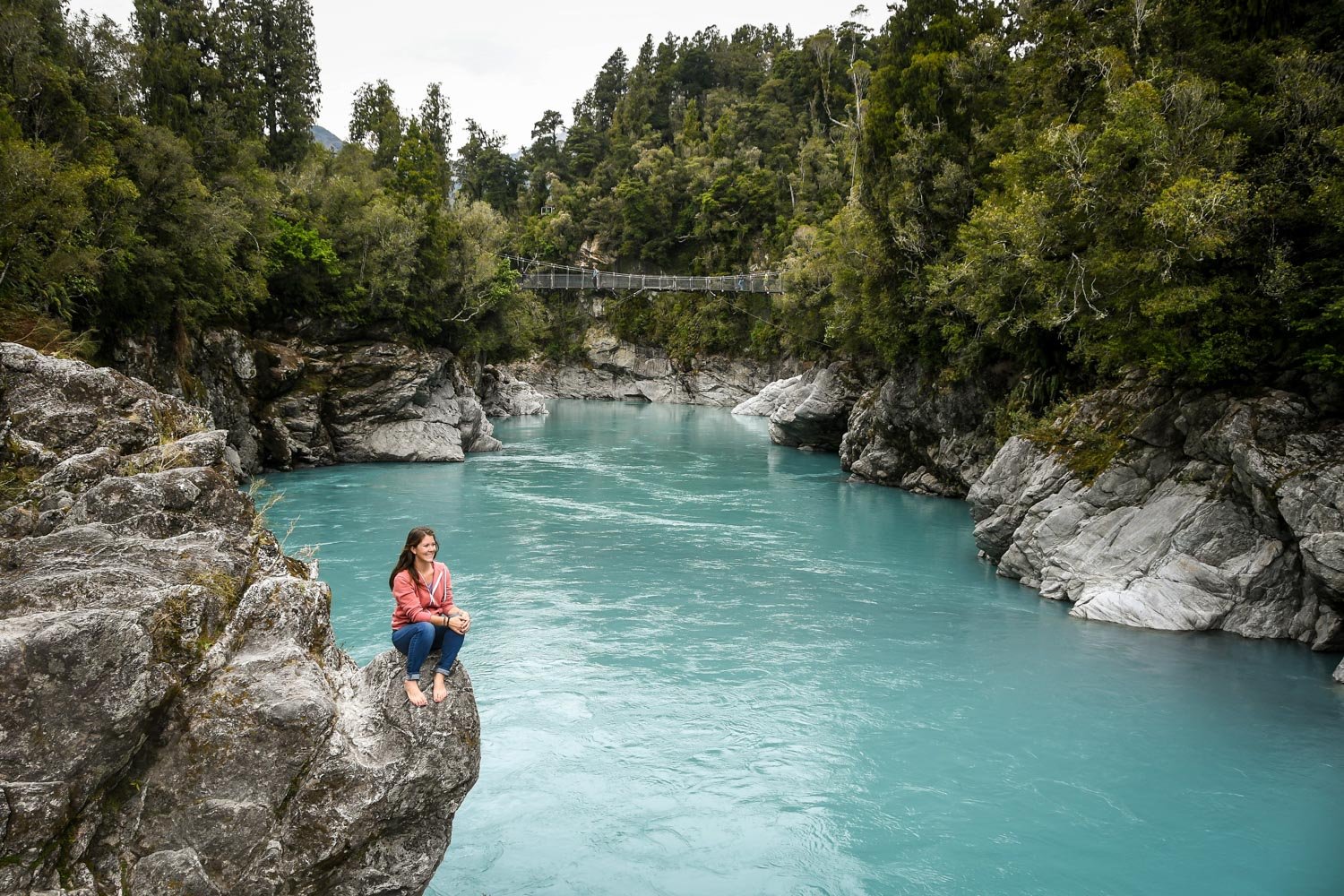
We’ve traveled to places where people complain about sandflies, but I don’t think I’ve ever had a sandfly bite in my life. Until New Zealand.
While they live in most parts of the country, we found them to be worst in the South Island — on the West Coast in particular.
How to prevent sandfly bites: They tend to come out around dusk, so be sure to cover your skin as much as possible. And for any exposed areas, you can apply a bit of baby oil (or other type of oil), as they can’t bite through this slippery layer. Oh, and they don’t live in the sand. They get their name from their sandy brown color.
15. Know about Working Holiday Visas
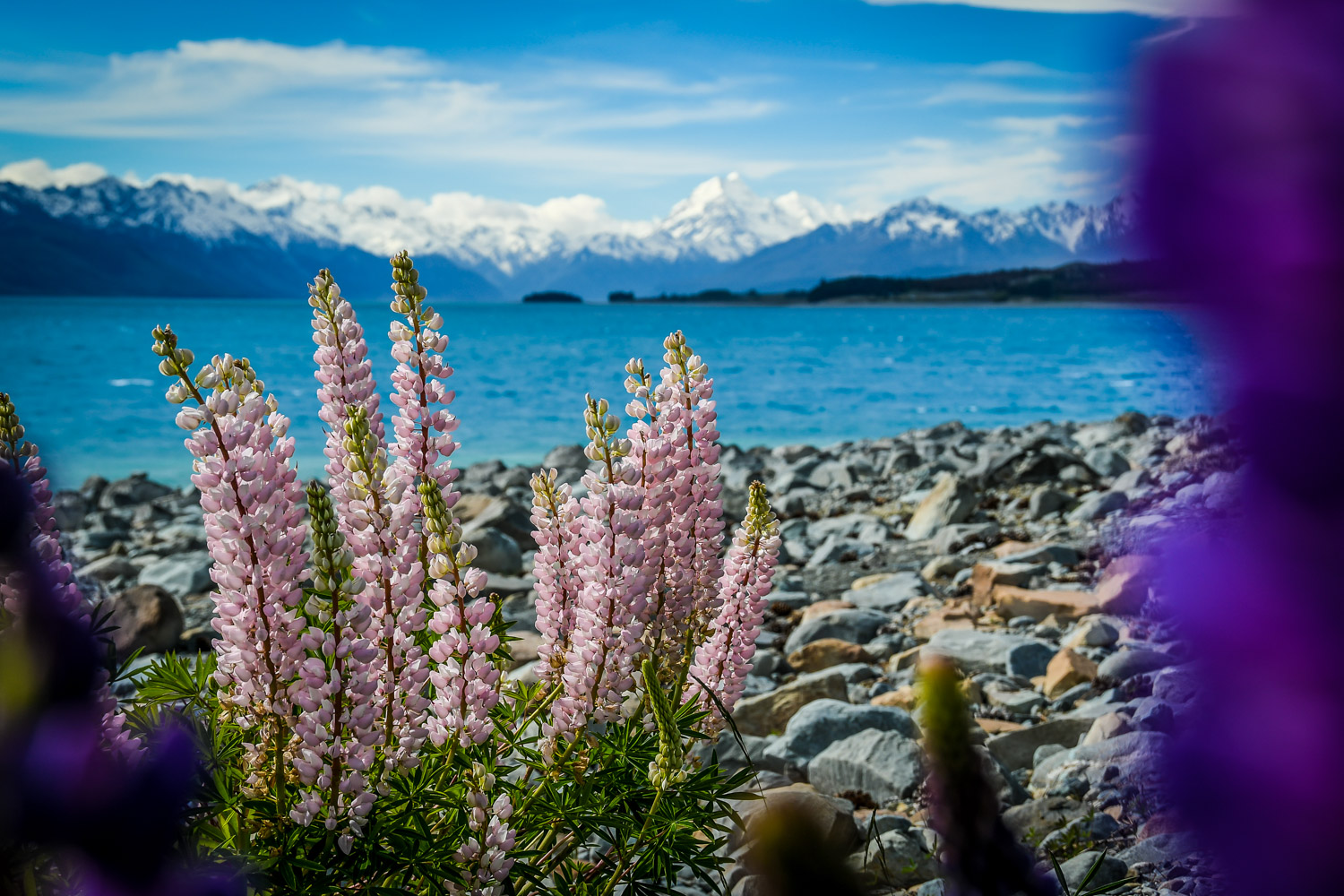
You might notice that a lot of the people behind counters at coffee shops and tour operators don’t have a Kiwi accent… And that’s because they’re probably not from New Zealand at all!
New Zealand is a super popular place for young people to do Working Holiday Visas. This essentially means they can live in New Zealand for 1-2 years (depending on their nationality) and hold a job.
Jobs in the service and tourism industries are easy to get, so your waitress, barista or tour guide might not actually be a local at all; but a foreigner, just like you! However, just because they’re not a native New Zealander doesn’t mean you shouldn’t ask them for local advice. Often times they have great tips because they recently moved to New Zealand and have had a chance to explore the hot spots and hear about the hidden gems.
On a related note… This means that if you fall in love with New Zealand (let’s be real, WHEN you fall in love with NZ!), you can move there for a year or two… My brother did it! And he helped us create this handy guide: Everything You Need to Know about Getting a Working Holiday Visa in New Zealand.
16. Tipping isn’t necessary
Unless you receive exceptional service, it’s not compulsory to add a tip. And in some restaurants, a service charge will already be added to your bill, so there’s no need to add any extra cash.
17. Prices will always be rounded
The smallest coin in New Zealand is a 10-cent piece, so the total cost will always be rounded up to the nearest zero.
18. Sales tax is included
Whatcha see is what you get. There is sales tax, but it’s included in the price you see so there are no surprises when you get your bill.
19. Wine is cheap (& fantastic!)
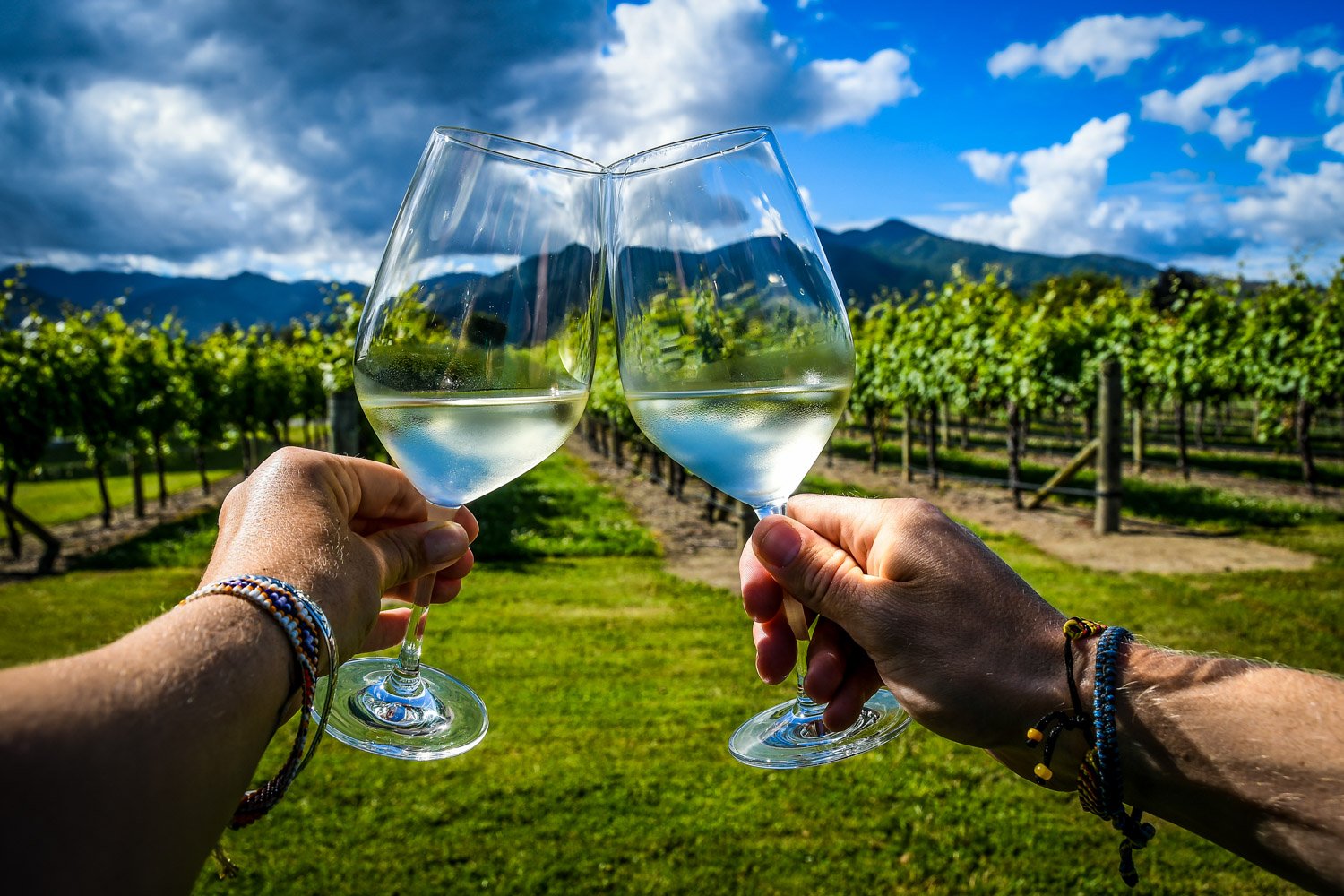
After spending a lot of time in Asia, we were so excited to be in a place where wine was good (and didn’t cost more than our accommodation!).
If you like wine, you’ll love traveling in New Zealand. We consistently found great wine for less than $5 USD.
However, if you’re more of a spirit or beer drinker, I hate to break it to you, but you’ll need to allocate a bit more money to your alcohol budget.
We found that ordering beer in a brewery or restaurant was the price we’d expect (around $5-8 USD for a pint), but buying it at the liquor store was much more expensive than we were used to in the US.
20. Carry your passport to buy alcohol
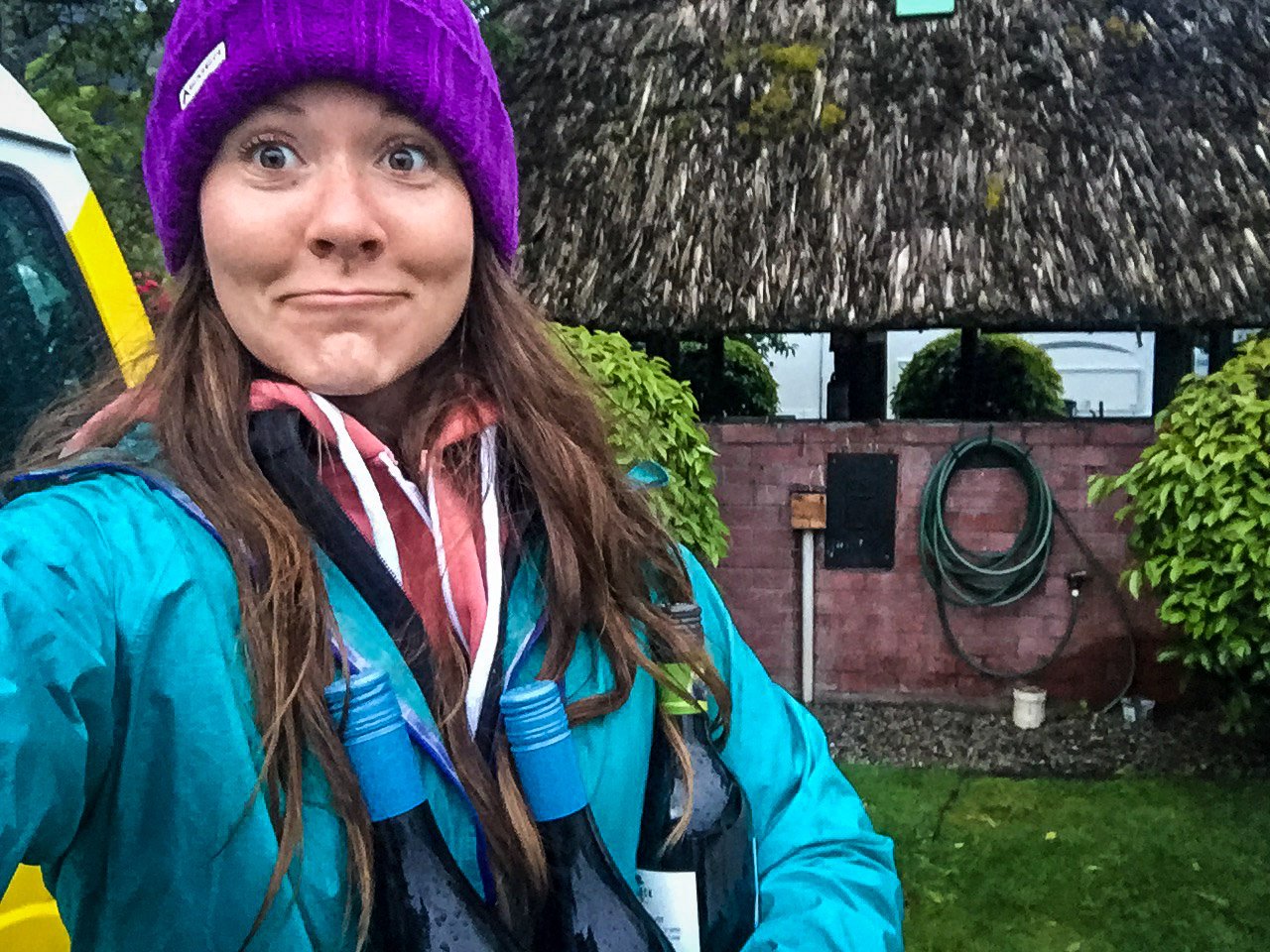
And while we’re on the topic of adult beverages, be sure to bring your passport with you to the grocery store if you plan to purchase any alcohol.
While my 30-year-old self was flattered the first time I was asked for ID in a country where the legal drinking age is 18, it gets OLD. I just want a bottle of cabernet, damnit. The policy at many stores is to card anyone who looks under 40 years of age.
Remember to bring your passport with you and save yourself from running through the parking lot while all the other customers in line stare you down.
Oh, and for the record, an out-of-country drivers license does not count as an ID. Trust me, I’ve tried… and failed.
21. Eating out will eat your budget
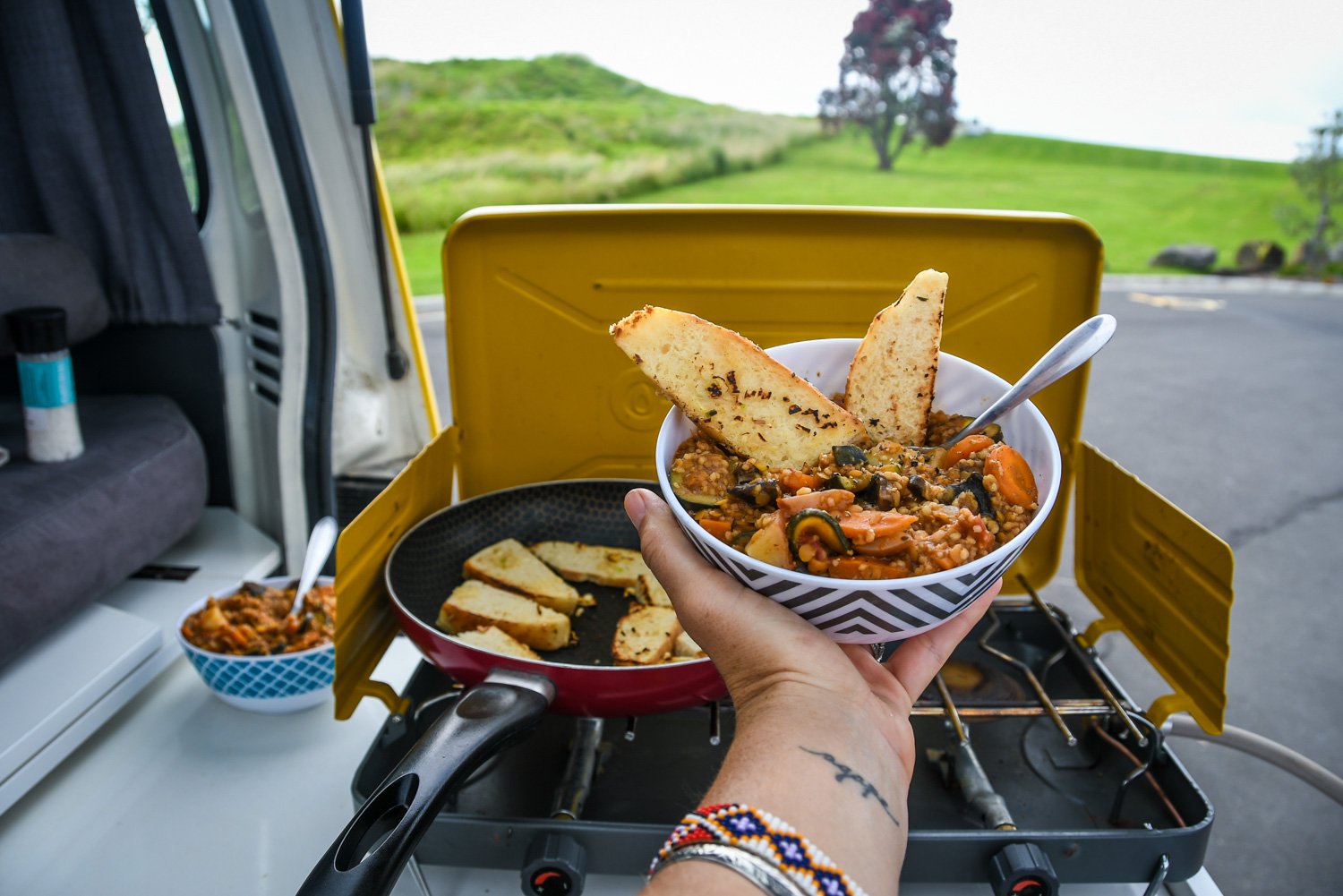
Meat pies or fish and chips shops are your best best for some quick and cheap food. But I don’t know about you, but my body can’t handle fried fast-food every day. So if you’re in search of a salad or sandwich from a proper sit-down restaurant, meals can be quite expensive!
In order to stick to our budget, we limited the amount of meals we ate out, and cooked a lot instead. Just another perk to traveling in a campervan!
Related Reading: Check out this list of our favorite campervan meals. They’re all cheap, easy and healthy — what more could you ask for?!
22. Drink the water
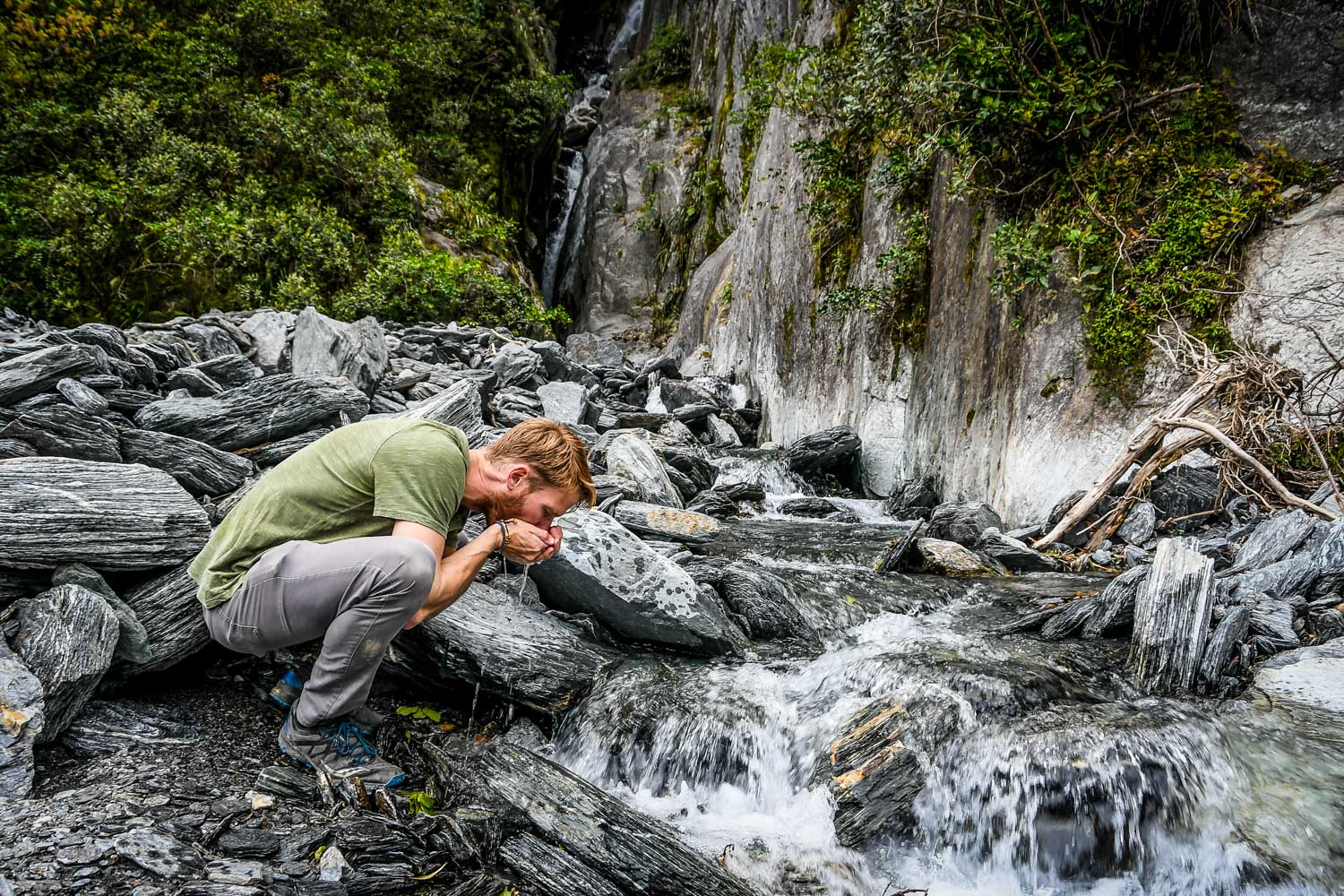
Tap water is safe to drink in New Zealand, folks! And it is delicious (especially in the South Island).
I mean, you’re basically drinking from a glacier. So there’s really no reason to by the bottled stuff.
So bring your reusable water bottle and fill ‘er up!
23. It’s easy being “green”
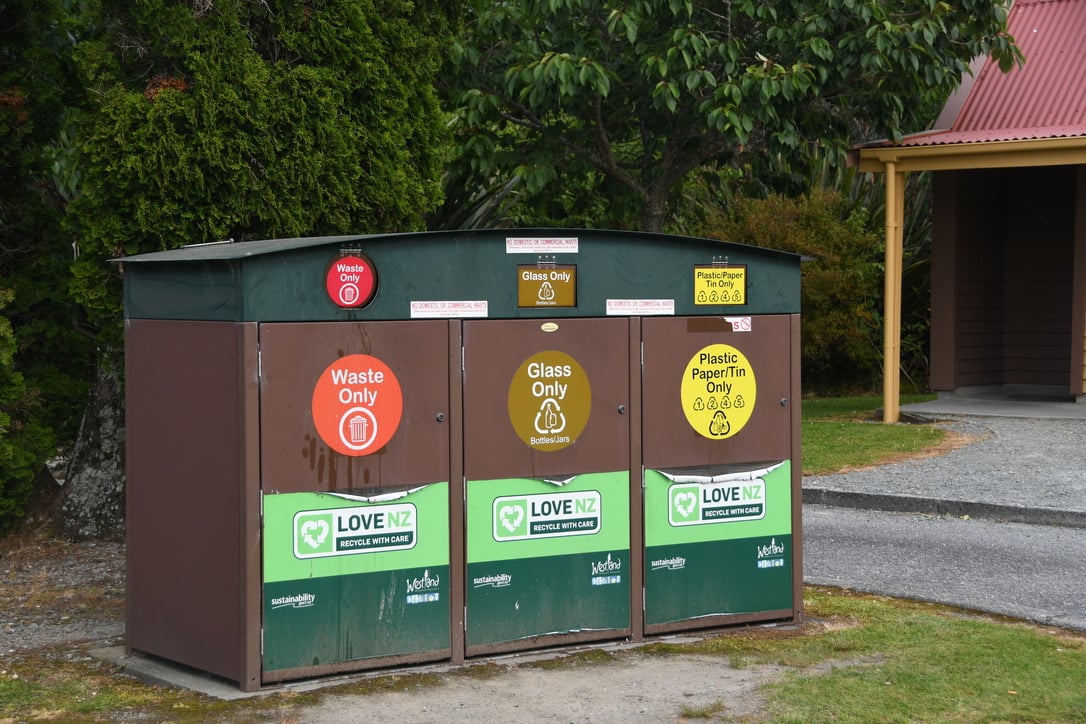
We were pleased to notice the efforts being made around New Zealand to reduce waste and separate it properly.
In many grocery stores, you’ll pay extra for plastic bags (so pack your own reusable ones!). And you’ll get a nice discount (sometimes 50 cents!) when you bring your own cup to coffee shops.
It is also quite common for trash bins to be separated into plastics, glass, metal, and organics.
24. Those are JADE necklaces you see everywhere
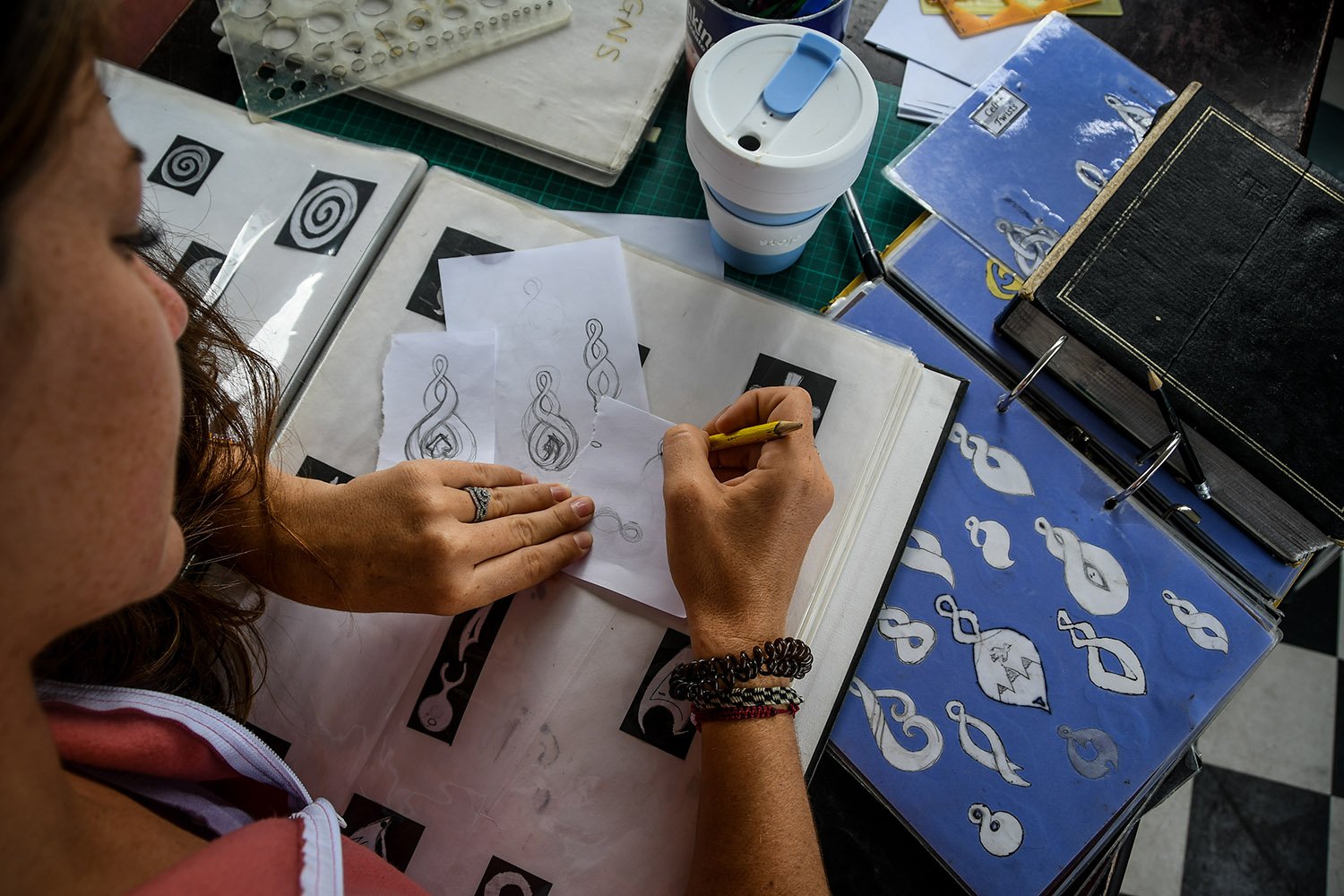
It won’t take you long to notice the stone necklaces around people’s necks and in souvenir shops. They are made from New Zealand jade, or greenstone, and are often carved following traditional Māori designs.
These are a common gift for Kiwis to give to visitors, and they make a popular souvenir. You can even carve your own jade necklace, like we did!
25. Kiwis take their coffee seriously
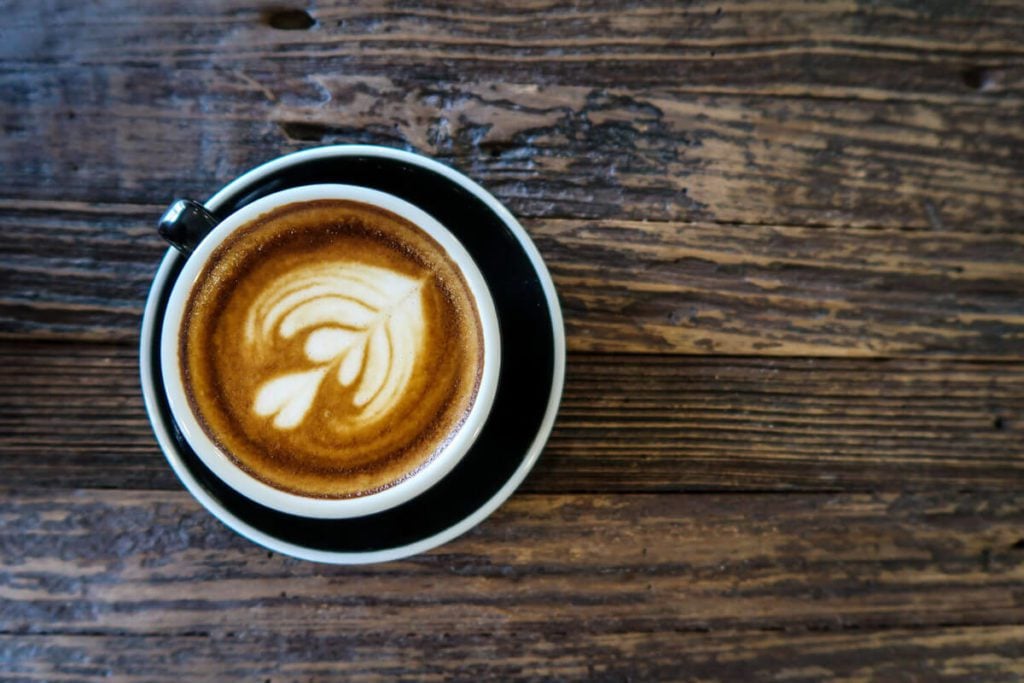
We are huge coffee fans, and we’re pleased to find a great selection of our favorite morning beverage all over the country. Even in remote areas with no cell service. (Priorities!)
You won’t easily find drip coffee in New Zealand, so instead, order a long black, which is essentially an Americano (espresso plus hot water).
Or go for the Kiwi favorite: a flat white (a stronger version of a latte). It is said that a New Zealander invented this ultra-popular coffee drink, but an Australian man disputes this claim and says it was he who came up with it.
Regardless of who was first, it is delicious, so give it a try!
26. There’s a rivalry with Australia
Speaking of Australia… there is a bit of a rivalry between the two countries. Just tell a Kiwi they sound like they’re from Australia and you’ll see what I mean. (Actually, don’t do it, just trust us on this!)
It’s all in good fun (for the most part!). Except when it comes to rugby. Then it’s a different story.
27. Try flavors you won’t find anywhere else
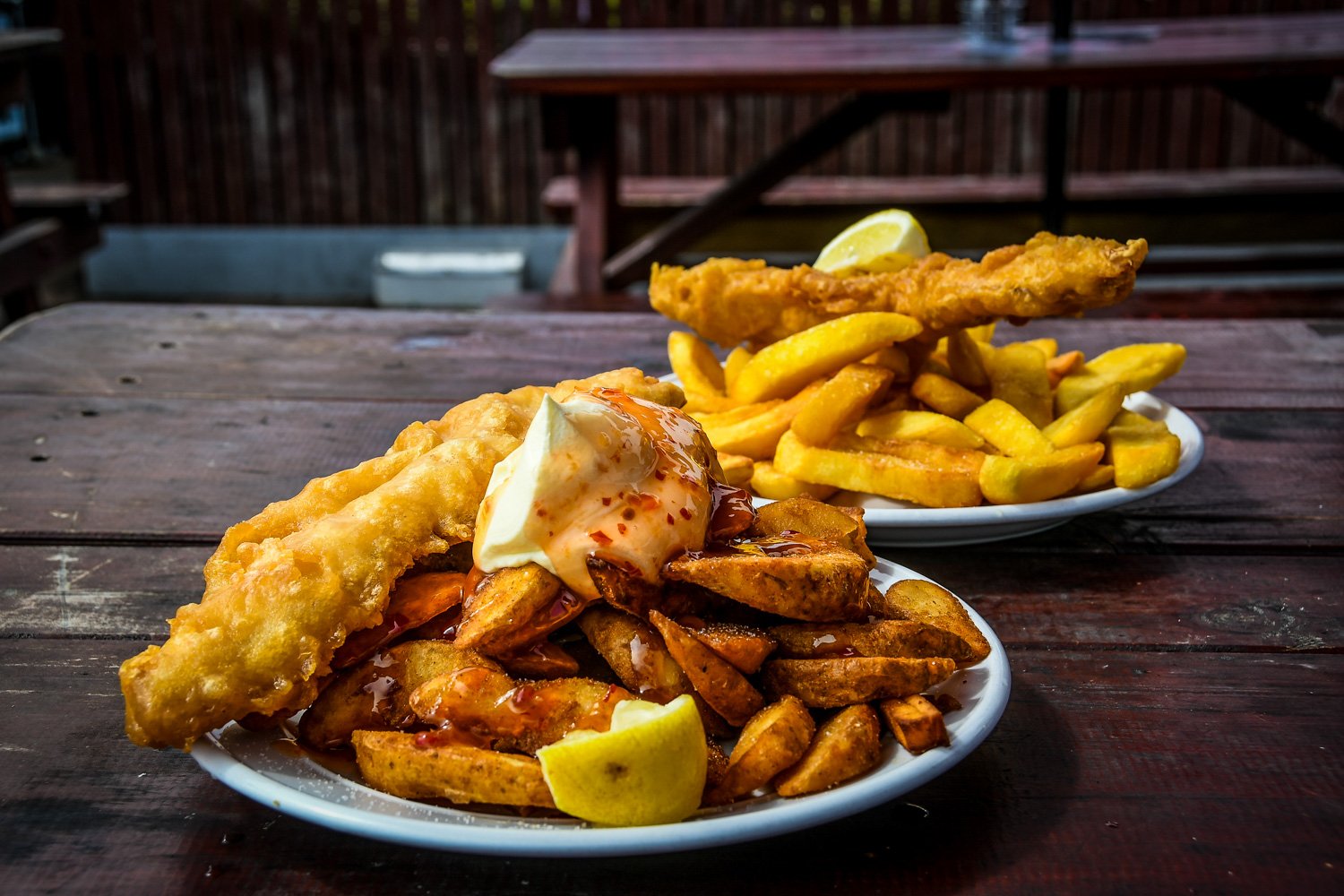
While Kiwi cuisine isn’t anything too special — think of it as similar to what you’d find in the UK or US — there are some unique flavor combinations we haven’t seen anywhere else in the world.
- Fries (or hot chips, as Kiwis say) with sour cream and sweet chili sauce: This is a popular option we found all around New Zealand, and hot damn, it’s good. Like, why isn’t this always an option? (See photo above to make your mouth water!)
- Kiwi Pavlova: It’s debatable whether this is from Australia or New Zealand, but regardless, it is a delicious dessert with meringue, whipped cream and fruit (usually kiwi!). Sometimes you can find this as an ice cream flavor too
- Hokey Pokey Ice Cream: Caramelized honeycomb flavor
- Kiwi Burger: Sold at McDonalds and other restaurants, this burger is on another level — with beetroot and a fried egg!
- Afgan Cookies: Cookies with cocoa, cornflakes, chocolate icing and half a walnut.
Psst! We have an entire guide to food in New Zealand so you know exactly what to try!
28. Hiking is a big deal in New Zealand
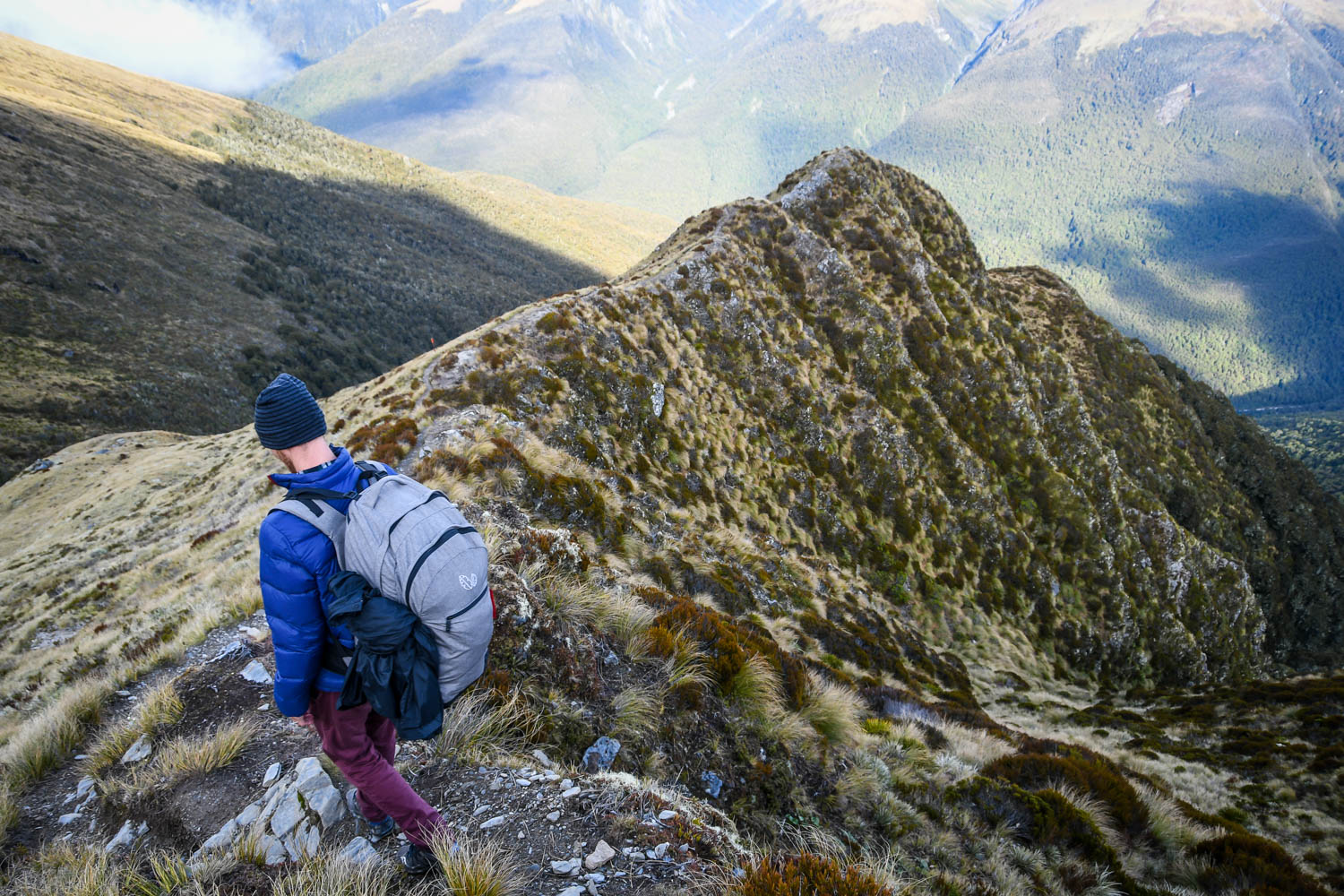
There are countless trails around the country of varying lengths and difficulty levels. Whether you’re looking for a short, hour-long hike or an epic multi-day trek, New Zealand is truly a hiker’s paradise.
Lucky for you, we’ve mapped out some of the most incredible New Zealand hikes for you to fit into your itinerary.
For the most part, the trails are very well-maintained by the DOC (Department of Conservation). There are typically toilets and trash bins at the trailhead, and signs marking the route.
Some of the most popular hikes are the trails known as New Zealand’s “Great Walks”. These 9 routes showcase some of the country’s most stunning scenery, and they typically take several days to complete. However, if you are limited on time, there are many, many more to choose from.
There are nearly 1,000 mountain huts around the country located on longer trails. You can hike in and spend the night, which is a popular thing for Kiwis and travelers alike.
Good to know: If you stay at a mountain hut, you are not trekking, you are tramping.
29. National Parks are free
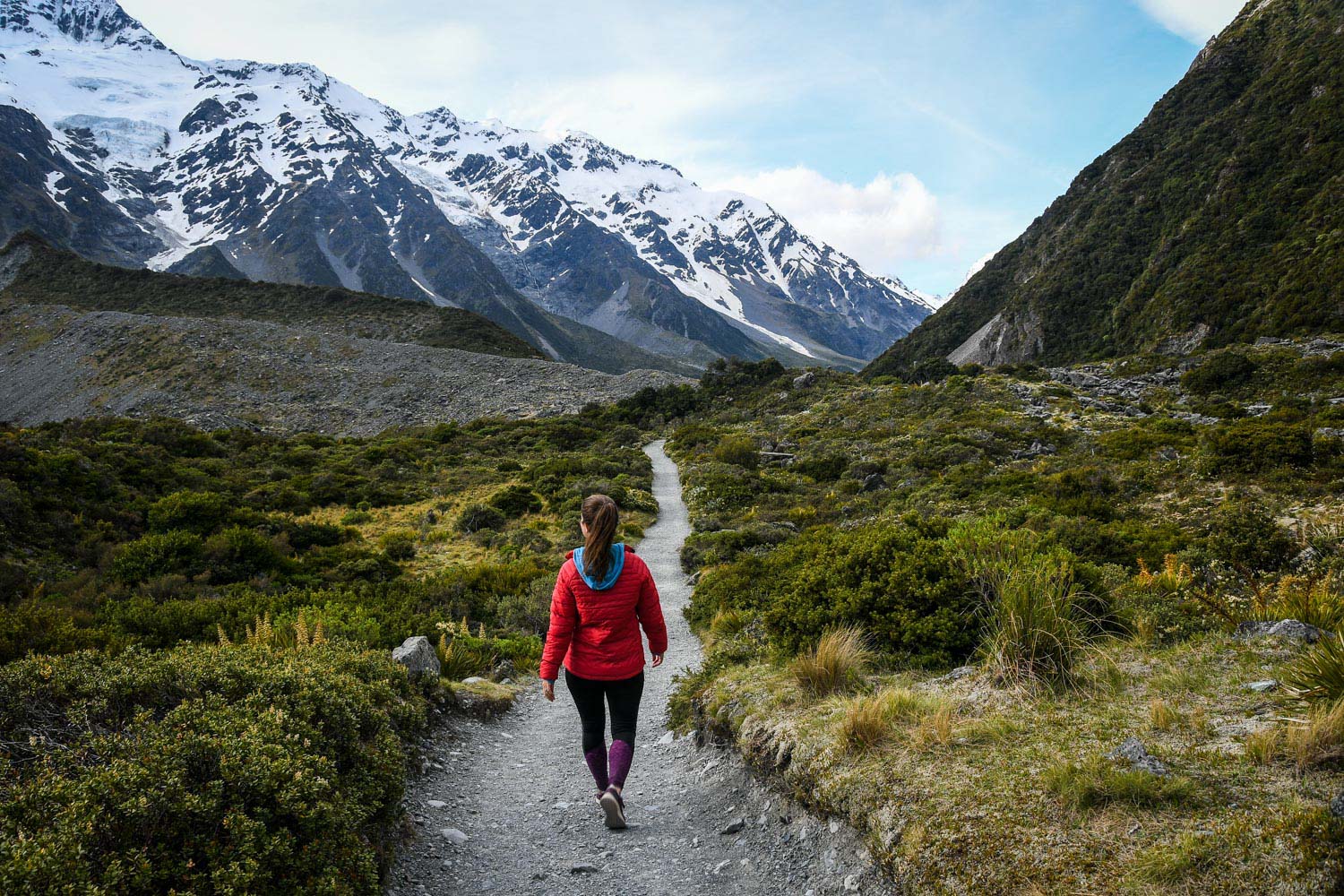
We’re used to paying entrance fees in the United States, so we just assumed it would be the same in New Zealand.
But we were (pleasantly) surprised to find all National Parks are free to enter! Take advantage of this and explore as many as you can.
And there are a lot to explore! In fact, protected National Parks comprise nearly one-third of the country and are definitely some of the best things to do in New Zealand.
Responsible Travel Tip: But be sure to read up on Leave No Trace principles so that these parks stay beautiful for the many visitors after you.
30. Hitchhiking is legal
You’ll surely see people on the side of the road with a smile on their face, a pack on their back, and their thumb sticking out.
It’s perfectly legal to hitchhike as long as you’re not doing it on a motorway. So pick that backpacker up, or try it out yourself. Either way, you’ll have an adventure!
31. This is the birthplace of bungee jumping
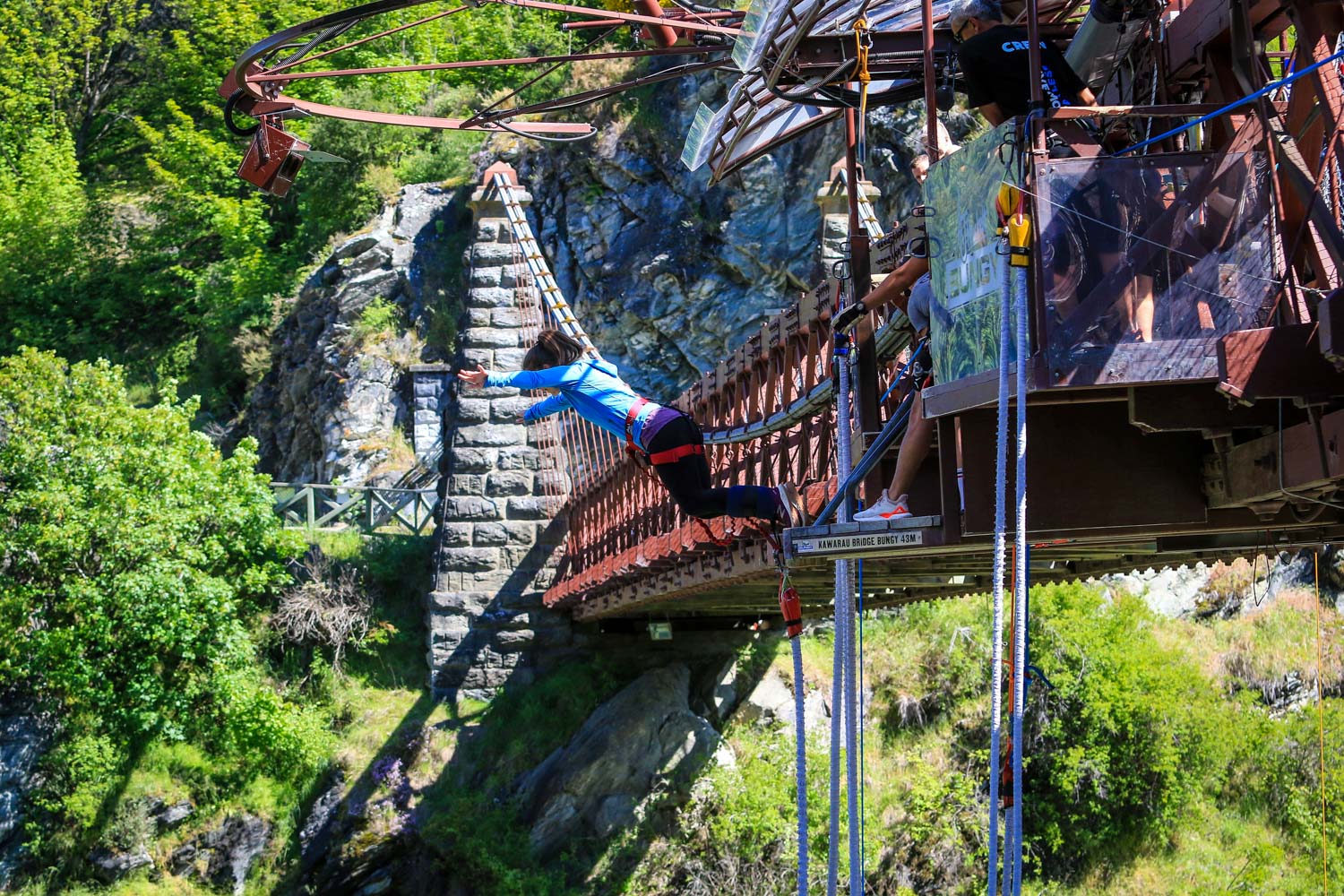
Not far from Queenstown is the world’s first commercial bungee jump! Atop the Kawarau Bridge, daredevils and regular folks looking for a check mark on their bucket list throw themselves into the canyon below. It’s one of the most adrenaline-pumping things to do in Queenstown.
World-renowned adventure company AJ Hackett is the original, and the only one operating on the Kawarau Bridge. Not only is this 46-meter jump the original, but it is beautiful to boot. With an aquamarine river and lush canyon walls, it’s not too bad to look at — if you can keep your eyes open, that is. Oh, and you have the chance to touch the water below.
Totaling in around NZ$320 (~$190 USD), this is not a cheap activity, but if you’ve ever dreamed of bungee jumping, why not do the original?! (Or choose from many other jump sites around the country!)
Psst! In New Zealand they spell it “bungy” jump.
32. New Zealand is safe, but beware…
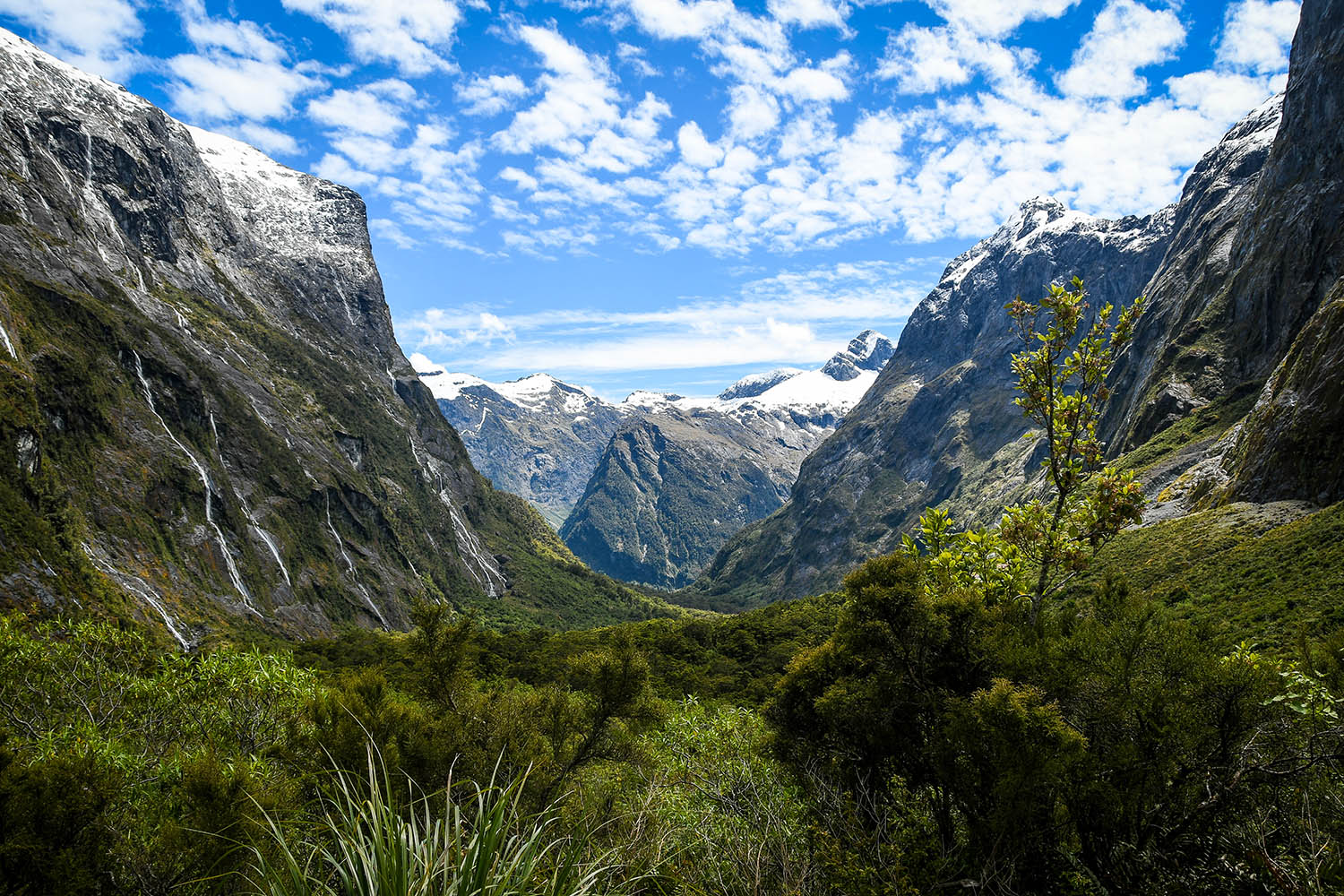
Overall, New Zealand is a very safe country and there is little crime. However, one area that we noticed several break-ins was around Rotorua. There were a few parking lots near waterfalls and hot springs with signs warning about thieves. And we saw glass on the ground, from a shattered car window.
We didn’t think much of it, but we made sure our valuables were out of sight. When we returned to our van, there was a couple frantically looking around for their passports, which had been stolen from their car along with their wallets.
Take care of your valuables, especially when you park your car and plan to leave it for a while.
Fun facts about New Zealand
These interesting and fun facts about New Zealand might not be all that practical, per se. But they will definitely give you a better understanding of the country, its people and the culture. I find when we are educated about these aspects of a country, we tend to get more out of our travels.
33. New Zealand is a new country
It was only 700-ish years ago that the Māori people came from the Polynesian islands to settle this remote land in the South Pacific.
So the history of this country is actually relatively short compared to many other parts of the world.
34. Here’s the truth about Māori culture
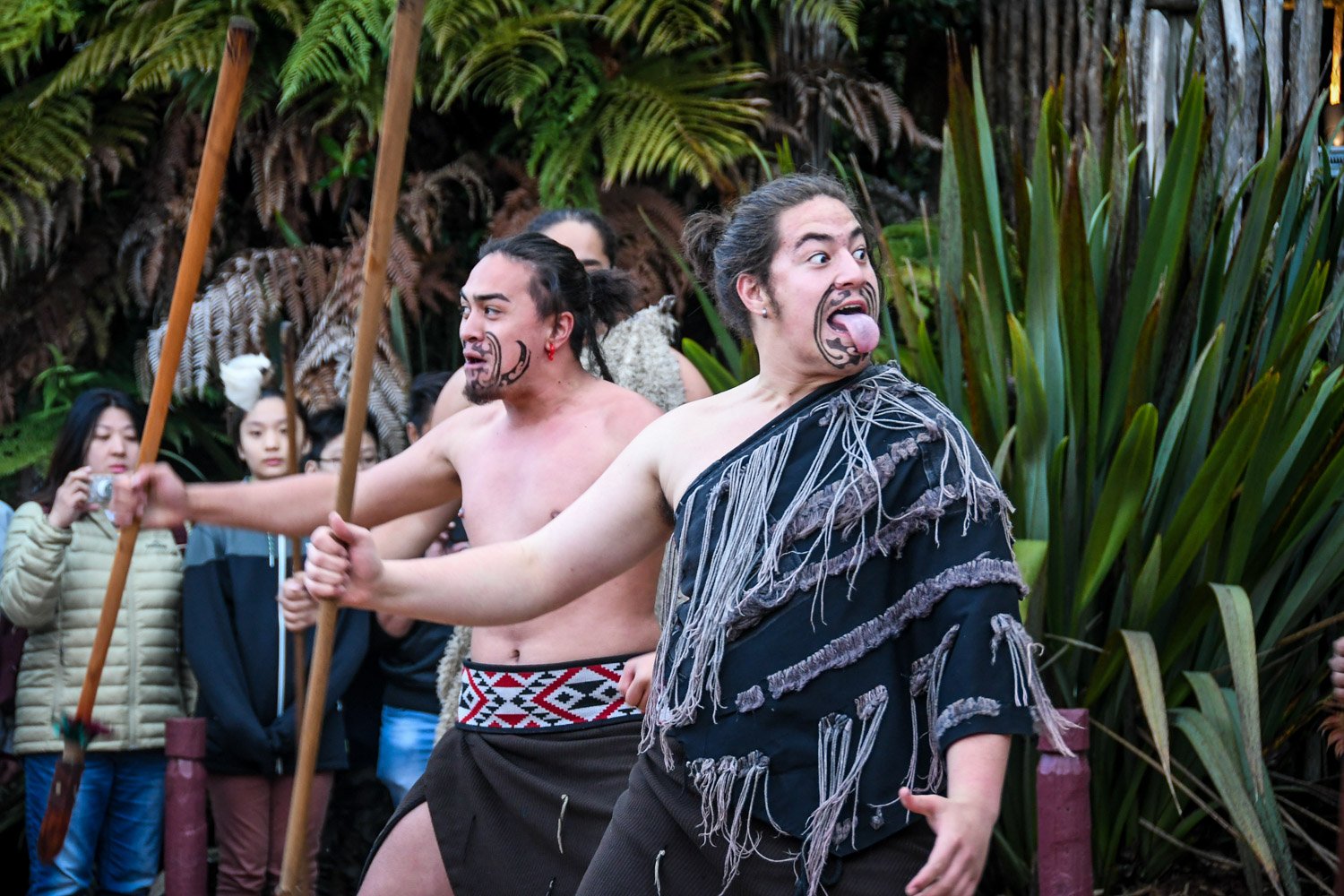
You’ll see Māori words and bits of culture all throughout the country, however, the Māori people were not always celebrated this way.
Like many other parts of the world, when white settlers entered the picture, they attempted to subdue the indigenous people already living there.
The Māori language, te reo Māori, was banned for a time, and their culture and religion suppressed.
Today, there is a focus on reviving the cultural identity, and there is a movement of young Māori people learning the language and getting traditional tattoos to celebrate their roots. However, only 24% of Māori people can speak te reo today, making it considered by many an “endangered language”.
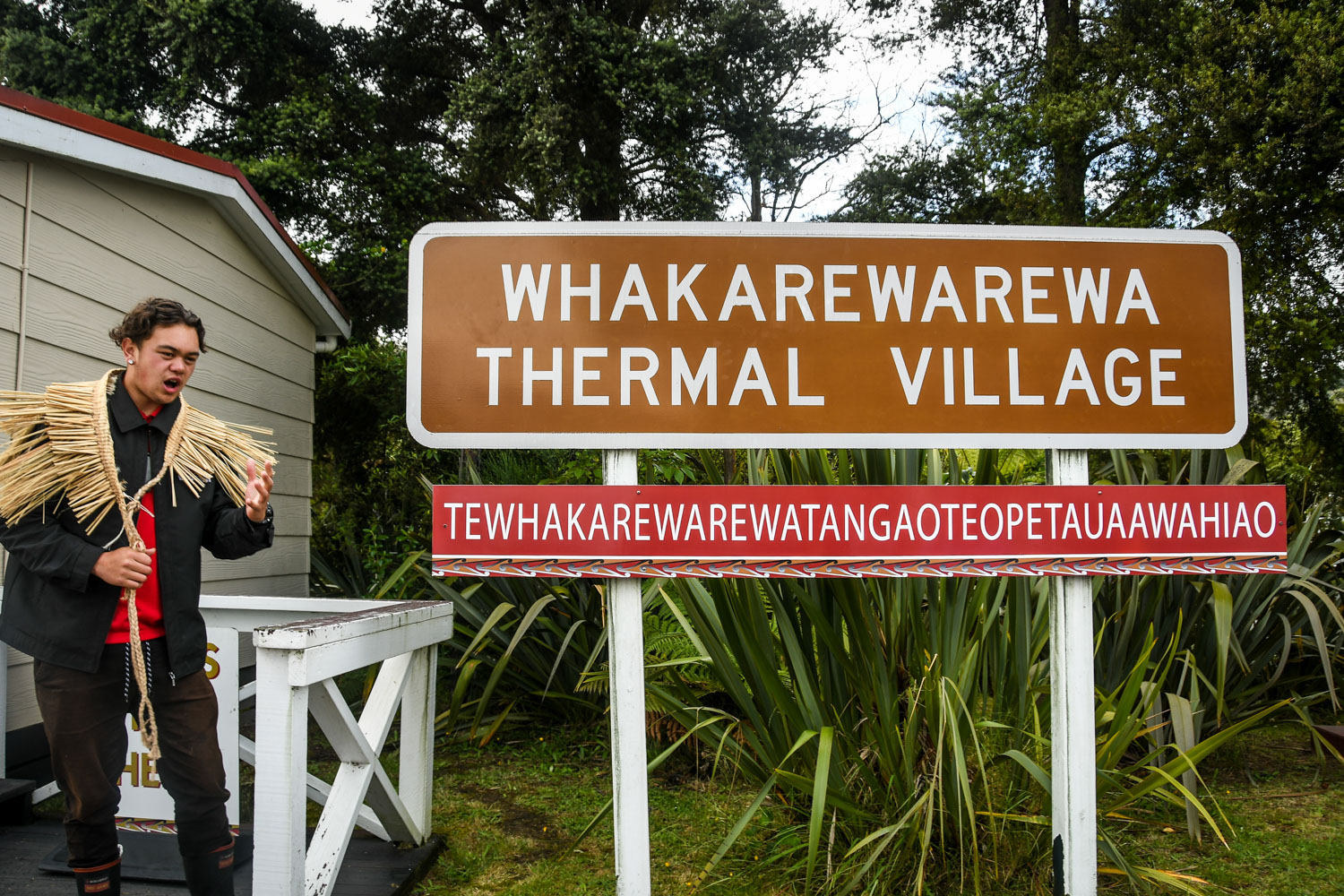
And similar to the indigenous peoples of the United States, Māori people face higher rates of socioeconomic issues like unemployment, health problems and imprisonment.
Learning about the Māori culture is not just an interesting addition to your trip to New Zealand. It is a way to support the resurgence of a group of people who have been quieted, and a way to ensure they have a voice and a space to protect their customs.
35. Aotearoa is New Zealand’s real name
Now that you’ve seen this word, you’ll start to notice it… (pronounced ow-te-ah-row-ah)
This is the Māori name for New Zealand and it translates roughly to “the land of the long white cloud”.
36. There really ARE sheep everywhere!
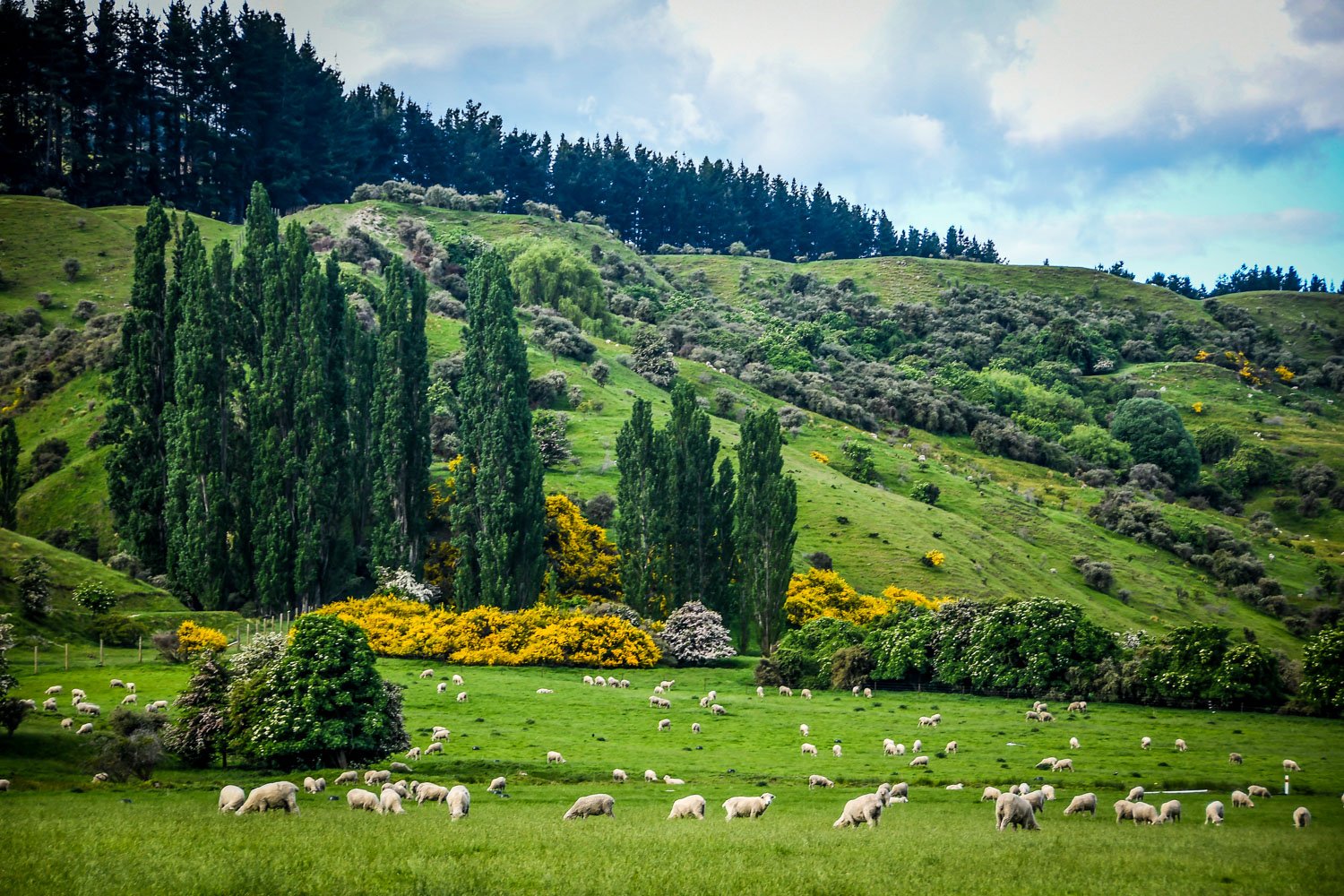
Yep, the stereotypes are true. Start driving and you’ll see sheep… Pastures of them.
There are around 27 million sheep in New Zealand, and only 4.8 million people. That works out to be around 6 sheep for every person in the country.
They SHEARLY outnumber humans.
(Sorry, couldn’t resist a sheep pun!)
37. Auckland is a cultural melting pot
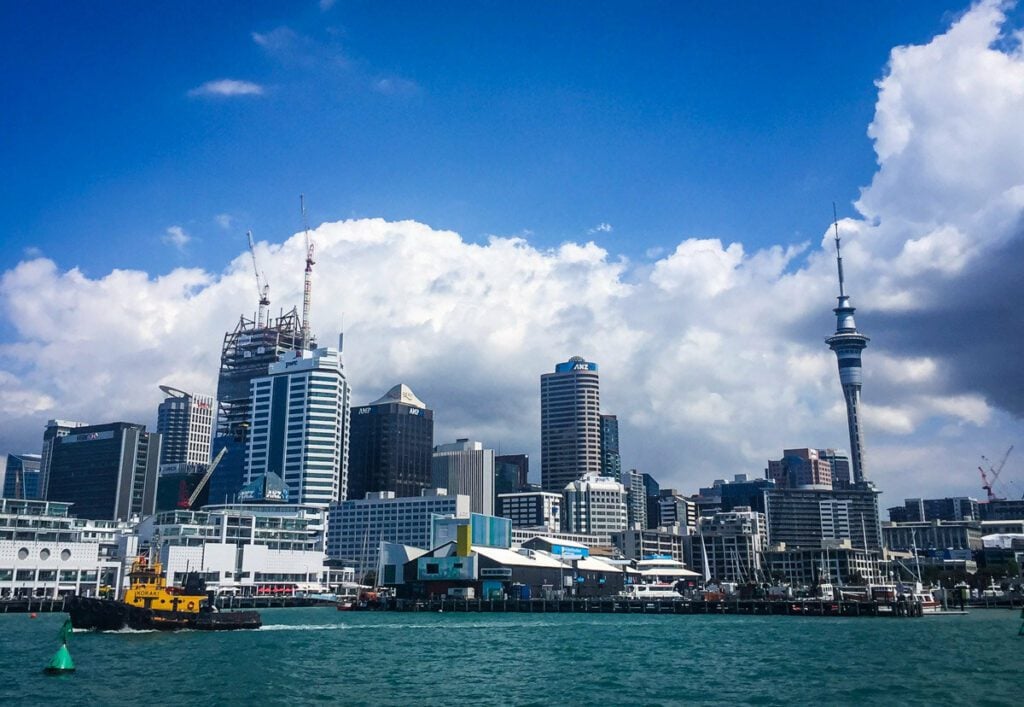
Parts of New Zealand, specifically the larger cities, are very multicultural.
In fact, Auckland has the largest Polynesian population in the world (more than Polynesia itself). Maori people make up the largest minority group, followed closely by Asians.
Auckland has been named “one of the most culturally diverse cities in the world”, with the 4th highest foreign-born population.
Related Reading: Check out our list of cheap and free things to do in Auckland!
38. Birds are a big deal here
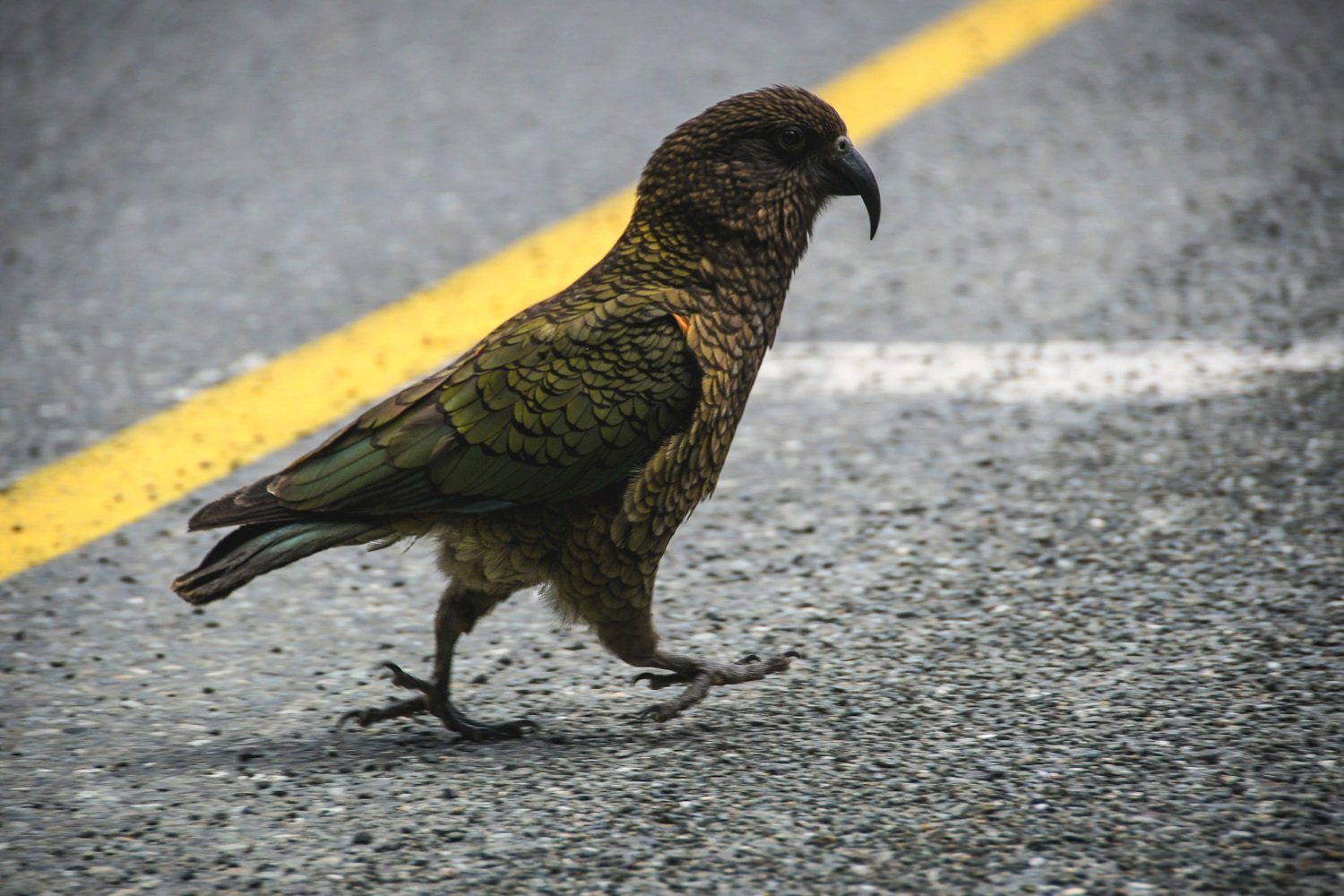
They’re everywhere! There are many species of birds that can only be found in New Zealand, and locals are very proud of this. So it comes as no surprise that people from New Zealand are nicknamed “Kiwis” after their national bird!
- Kiwi: This nocturnal flightless bird is the country’s icon, and is endangered, so you won’t see one unless you visit a conservation center.
- Kea: Chances are you’ll see quite a few of these green alpine parrots. They’re known for being very smart, but also a nuisance. We thought they were pretty cute, but hey, they didn’t attack our van!
- Tui: Found only in New Zealand, this small bird is known for it’s beautiful singsong call.
- Moa: An extinct bird that is depicted in brands and signs around the country. It could get as tall as 12 feet (3.6 meters), and looked a bit like an ostrich.
- Kererū: Also known as the “New Zealand Pigeon”, this bird is known for eating fermented fruit and getting drunk. Yes, seriously! You can spot this bird clumsily falling from branch to branch or flying a bit wonky. And in 2018, this was the “Bird of the Year”. That’s right, New Zealanders love birds so much that they name a “bird of the year”.
39. Kiwis (the fruit!) are a big thing too!
Unlike the bird, kiwifruits are not native to New Zealand (they’re actually from China — who knew?!), but they’re still a big deal. In fact, many young people on Working Holiday Visa spend time on kiwi farms. (Apparently it’s quite difficult work!)
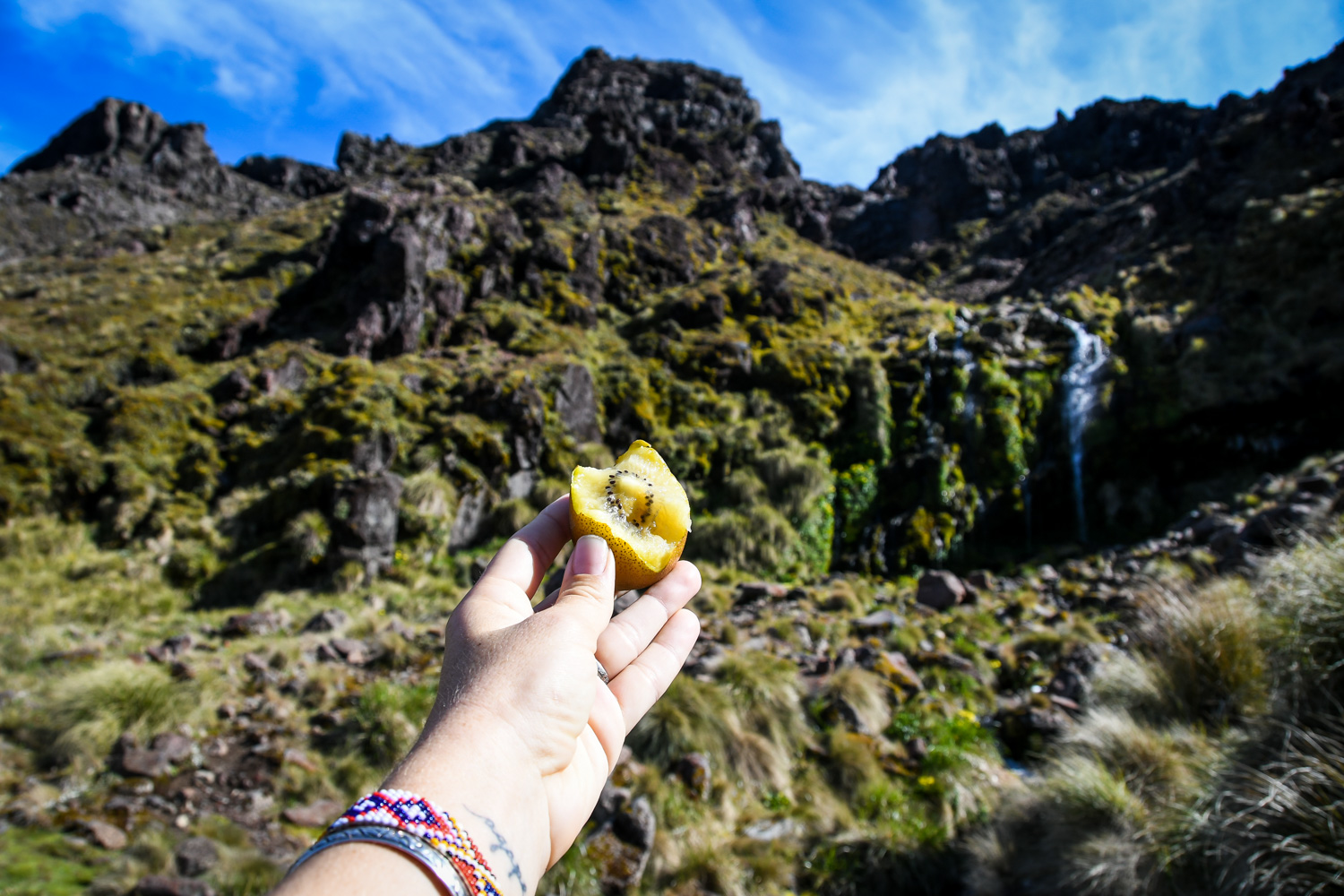
Insider Tip: While you’re in New Zealand, don’t forget to try the golden kiwi! They are sweeter and have a thinner skin. While we’re on the topic of skin, you can eat it — so go ahead and take a bite!
40. New Zealand has no native mammals
Did you know there are no native mammals in New Zealand? (Well, besides 2 species of bats.) This seriously blew my mind!
Any mammals you see on your travels were introduced by settlers.
This has taken a toll on the natural environment, as many of the native birds have become threatened by creatures like possums, rats and stoats (a type of weasel).
When you’re on hikes, you may notice small traps on the side of the trail, or pellets on the ground. These are 2 of the ways conservationists are trying to combat the issue.
Scared of snakes? We have good news for you: There are NO snakes in New Zealand. Notta one!
41. The flowers are pretty but…
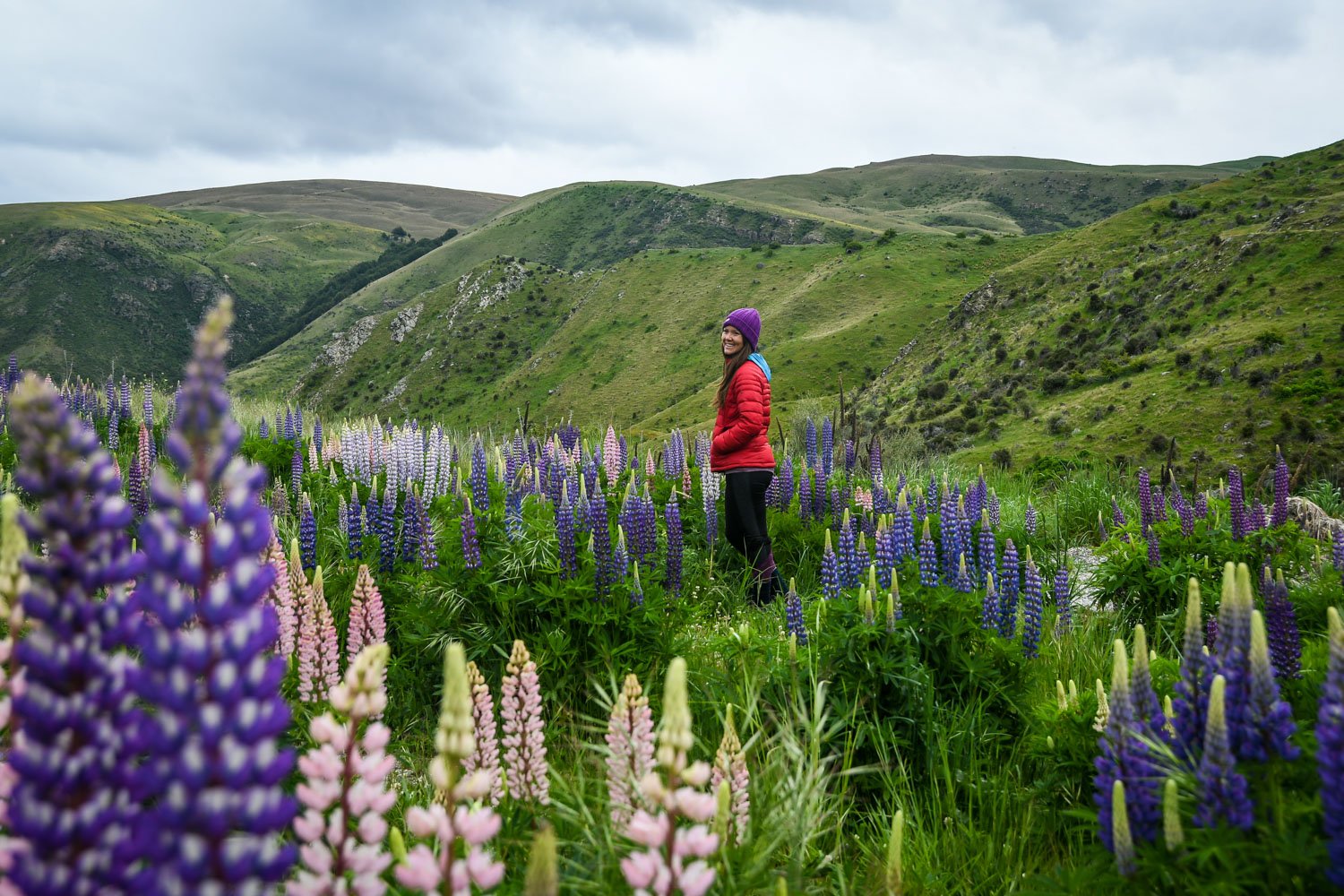
We were told by a naturalist that settlers to New Zealand missed the colorful flowers of their homelands. So just like they brought animals, they also brought plants.
Pretty? Yes. Good for the environment? Not always…
While there is no arguing the beauty of purple lupines in the spring, for example, they are actually an invasive species and can be detrimental to some of the native plants.
Basically any plant or flower that is not green is likely non-native to New Zealand.
42. Ferns tell a story
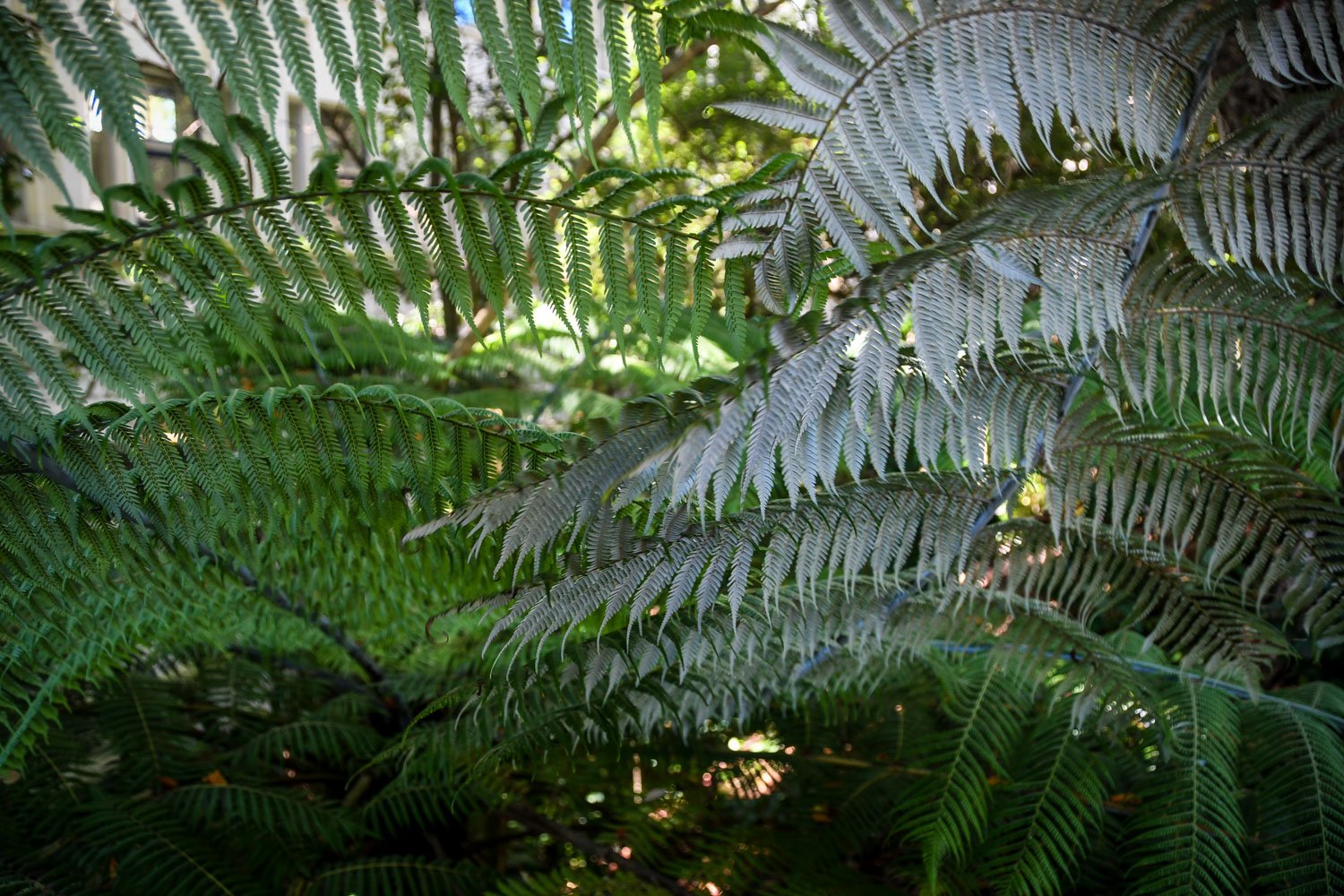
Ferns are a national symbol, and you’ll see them all over: on the New Zealand passport, the tourism board’s logo, souvenir keychains and shot glasses, the All Blacks uniforms, and on many-a-tattooed bicep…
So what’s the significance of the fern?
Well, for one, there are nearly 200 different types of ferns in New Zealand. But the one that you see in all the symbols is the Silver Fern.
The underside of the fronds is white, and the Māori used them for navigation at night: They would lay them on a trail, white-side up, which would reflect the moonlight and light the path for those behind them.
43. New Zealand is the first place in the world to see sunrise
For some reason, I always assumed Japan saw the sunrise first each morning — it is nicknamed “Land of the Rising Sun” after all! (Did you just learn something too?!)
But actually, New Zealand sees the sun first each morning. If you want to see the world’s first sunrise, head to the small city of Gisborne on the North Island’s East Cape.
44. Wellington is the southernmost capital in the world
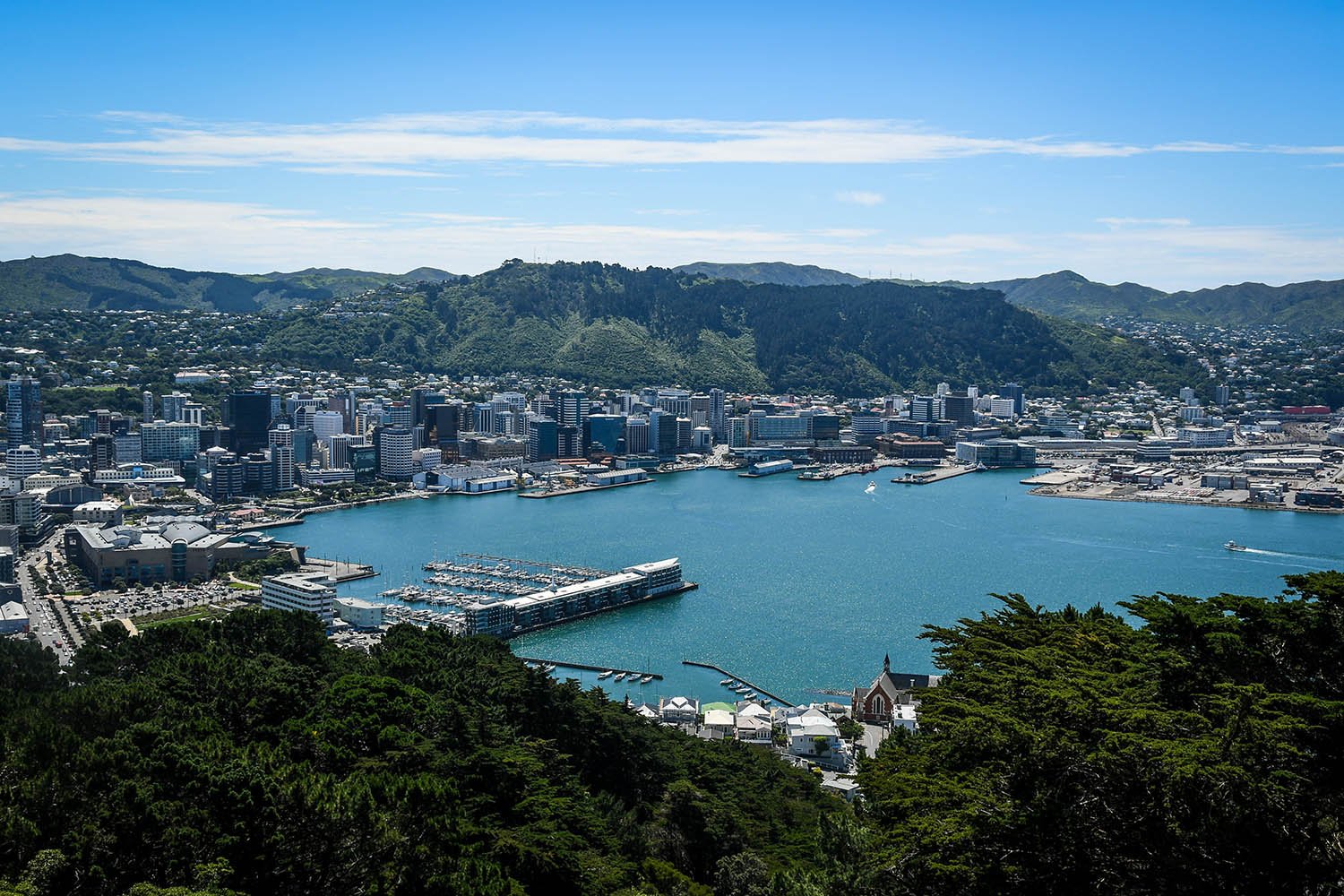
Cool, huh? And it’s actually a really neat city. From the botanical gardens to lively Cuba Street to a variety of breweries and the fantastic (and free!) Te Papau Museum, it’s well worth a day or two.
We kept hearing Kiwis rave about Wellington, saying it is “vastly underrated”, and I’d say they are right.
45. Majority of the people live on the North Island
More than 75% of New Zealand’s population lives on the North Island, and this is where the vast majority of industry takes place. And 1.7 million of the country’s total population of 4.8 people, live in Auckland.
If you talk with kiwis outside of Auckland, you’ll quickly notice there is a stereotype of those “city folk”. We heard the term JAFA thrown around a few times, which stands for “Just Another F$cking Aucklander”. (Don’t hate on us for the profanity — just sharing what we heard!)
46. Tourism is taking a toll
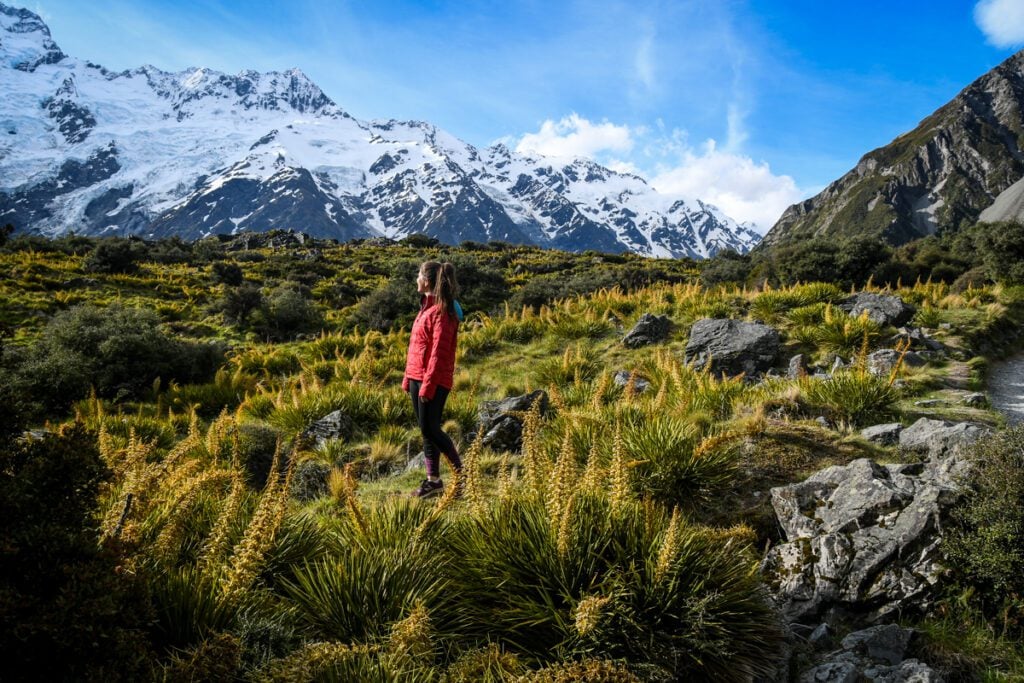
The number of tourists to New Zealand has been steadily rising, and clocked in at nearly 3.8 million visitors in 2018, and these numbers are only expected to increase.
In 2019, the government will be imposing a tourist tax of $35 NZD ($23 USD) that will go to conservation and infrastructure.
Tourism contributes significantly to New Zealand’s economy and creates plenty of jobs, however, this rise in travelers is not without controversy.
The popularity of freedom camping has led to sites that are littered with rubbish and human waste. And there are sights around the county that have gained so much Insta-fame that they have been described as being “ruined by social media”. (Take Roy’s Peak, for example.)
There was even a recent scandal when a family of tourists was reportedly issued deportation notices after a string of bad behavior. So I suppose it’s understandable why not all Kiwis are thrilled with the rise in tourism.
47. LOTR is everywhere!
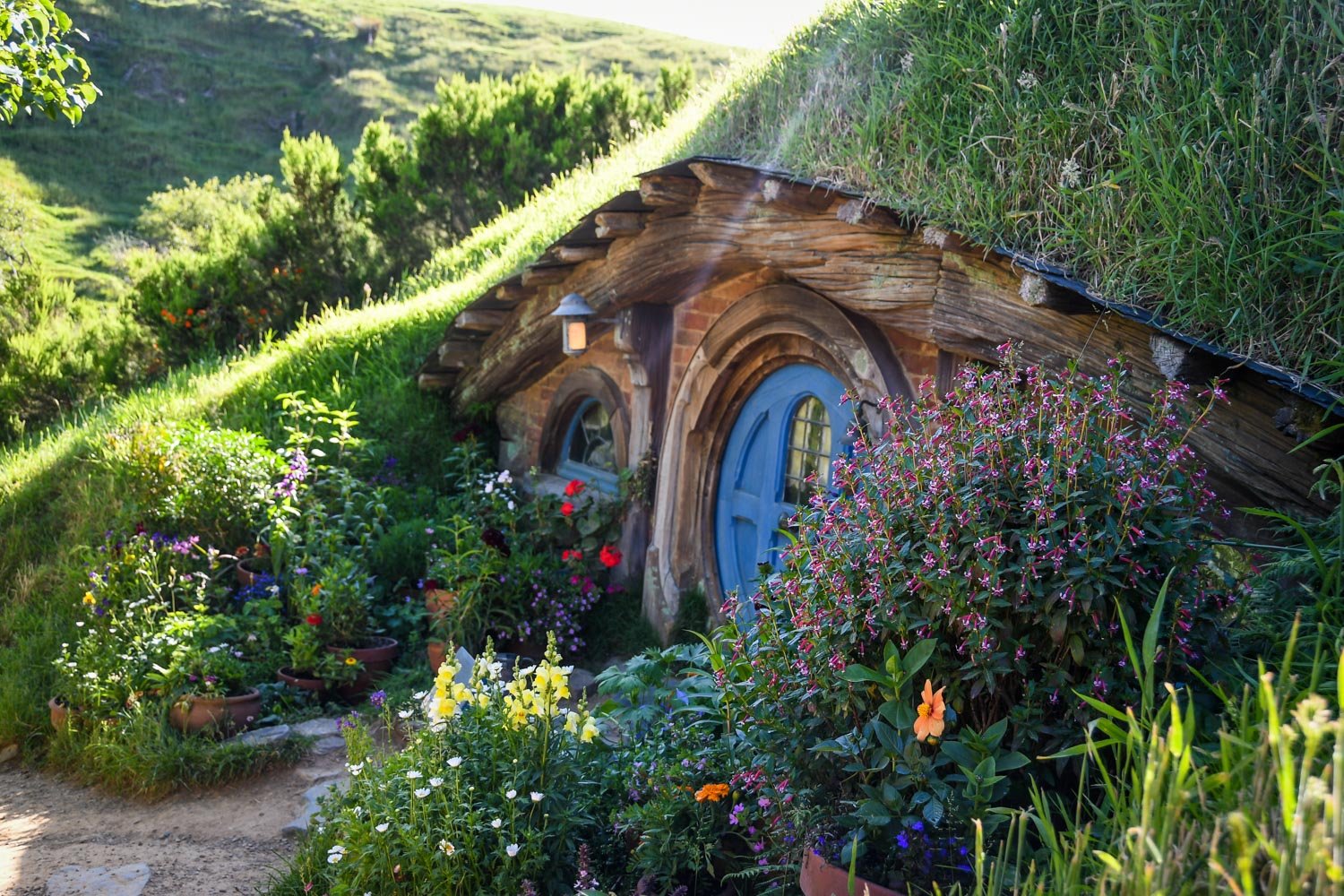
The Lord of the Rings movies were all filmed in New Zealand, and since their release, tourism in New Zealand skyrocketed. We read that the movie is responsible for a boost of $2 million tourist dollars.
Sure there’s Hobbiton, but you’ll also just see LOTR names and references everywhere in the country. Plus, you can actually seek out some of the shooting locations that you might recognize from the movies.
If you love the series, you’ll geek out. If not, no worries — there’s plenty more to the country than Hobbits and Dragons!
48. Manuka Honey is from New Zealand
If you look when you’re driving, you’ll start to notice hives everywhere. And you’ll see stands selling honey products in farmers markets or even on the roadside.
Renowned for its antibacterial, anti-inflammatory and antioxidant properties (that’s a lot of “anti”s!), Manuka honey is a popular ingredient in skincare products.
Tip: I bought a Manuka honey body butter from a farmers market. I thought it made a great (and useful) souvenir to bring home!
49. New Zealand is rocking the renewable energy game!
About 80% of the New Zealand’s power comes from renewable sources; the primary ones being hydropower and geothermal power. Cool, huh?!
That’s not all…
The country plans to transition to 100% renewable energy sources by the year 2035. This means by 2050, it’s expected that New Zealand will produce ZERO carbon emissions. Heck yes!
50. It’s a Golfers’ Paradise
Calling all golf fanatics! There are more than 400 golf courses in New Zealand, meaning it has more courses per capita than any other country in the world!
51. First country to let women vote
New Zealand was pretty ahead of its time when they granted women the right to vote back in 1893, making them the first country in the world to do so. Heck yes, New Zealand!
52. There’s a lotta earthquakes
Because of its location on two major tectonic plates, New Zealand experiences many earthquakes.
How many, you ask?
It’s estimated that there are more than 15,000 earthquakes in New Zealand each year. However, only 100 – 150 of them are big enough for people to feel.
The last major earthquake was in 2016 in the seaside town of Kaikoura. The quake measured 7.8 on the Richter scale, and destroyed many roads and buildings. Rebuilding cost a reported $1.8 billion.
53. And a lot of volcanoes too
In the Auckland area alone, there are 50 volcanic cones, most of which are extinct.
54. New Zealand has a “National Wizard”
Yep, you read that right. There’s a man who was officially appointed (in 1990) as the “National Wizard” of New Zealand. No, I’m not joking!
And if you’re wondering, no, there are no other countries in the world to have this high honor (yet).
Other resources for planning your trip to New Zealand
We have TONS of resources on travel in New Zealand and destinations throughout the country. Check out our Ultimate New Zealand Travel Guide for all the answers to your most burning questions, or read some of our favorite articles below.
- Top Things to Do in New Zealand on Your First Visit
- The Best Campervan Rental in New Zealand
- Car Rental in New Zealand: Essential Guide + Tips
- Perfect New Zealand Itinerary for 1 Month
- Ultimate Guide to Planning a Campervan Trip in New Zealand
- Money-Saving Tips for New Zealand
- Best New Zealand Foods to Try (+what to skip!)
Be sure to download our complete packing list for New Zealand! It’s packed with good suggestions and insider tips to help plan your campervan trip in New Zealand. And it’s completely FREE, so why not!?
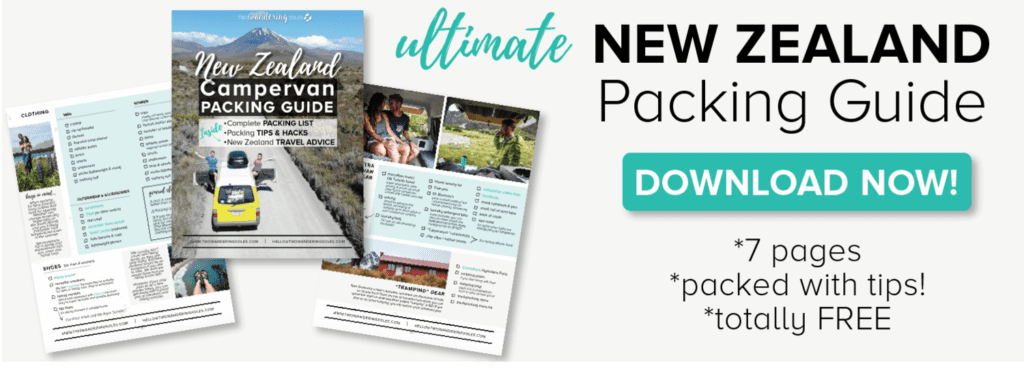
Save this article on Pinterest for later!
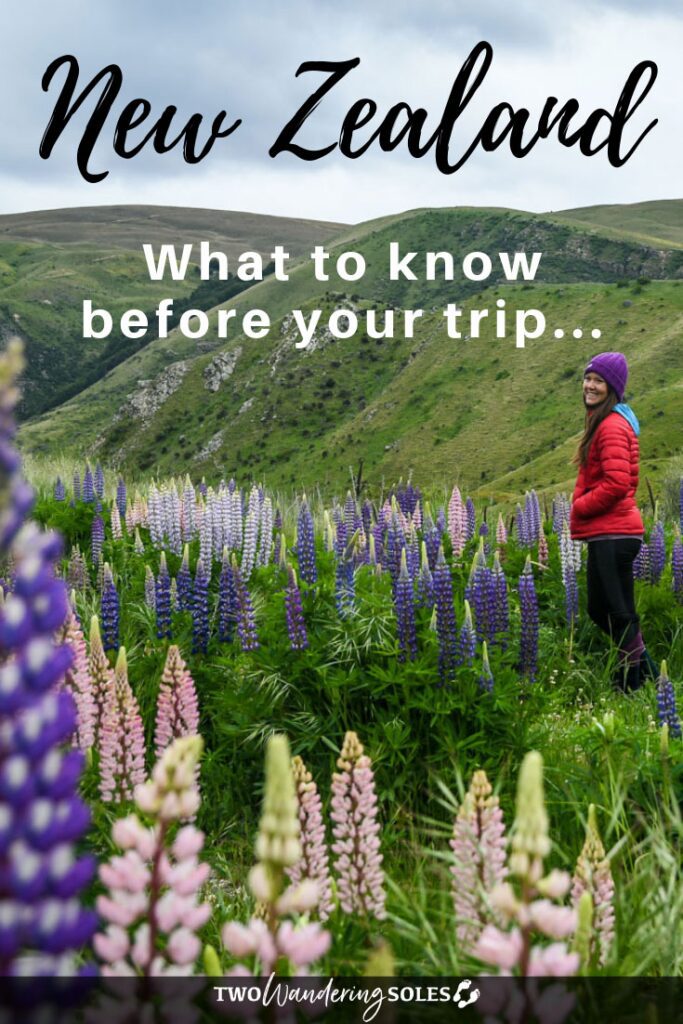
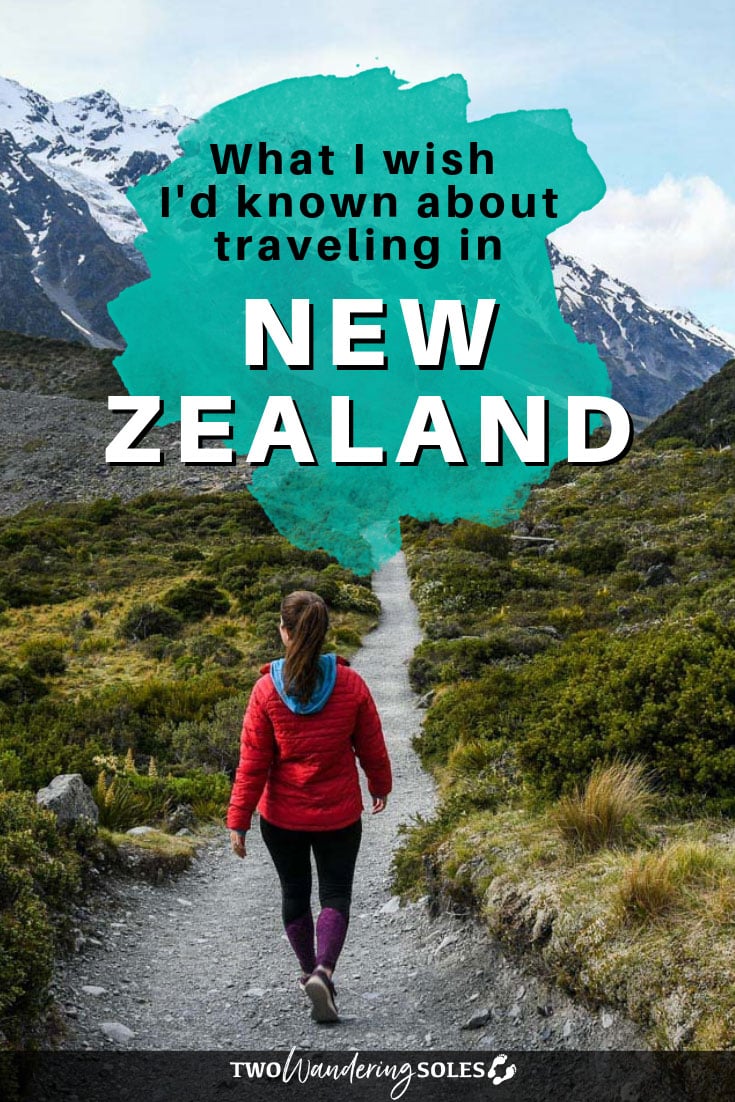
We want to hear from you!
Did anything from this list of New Zealand travel tips and fun facts surprise you? Or is there something we missed that you think should definitely be on this round-up?! Comment below!

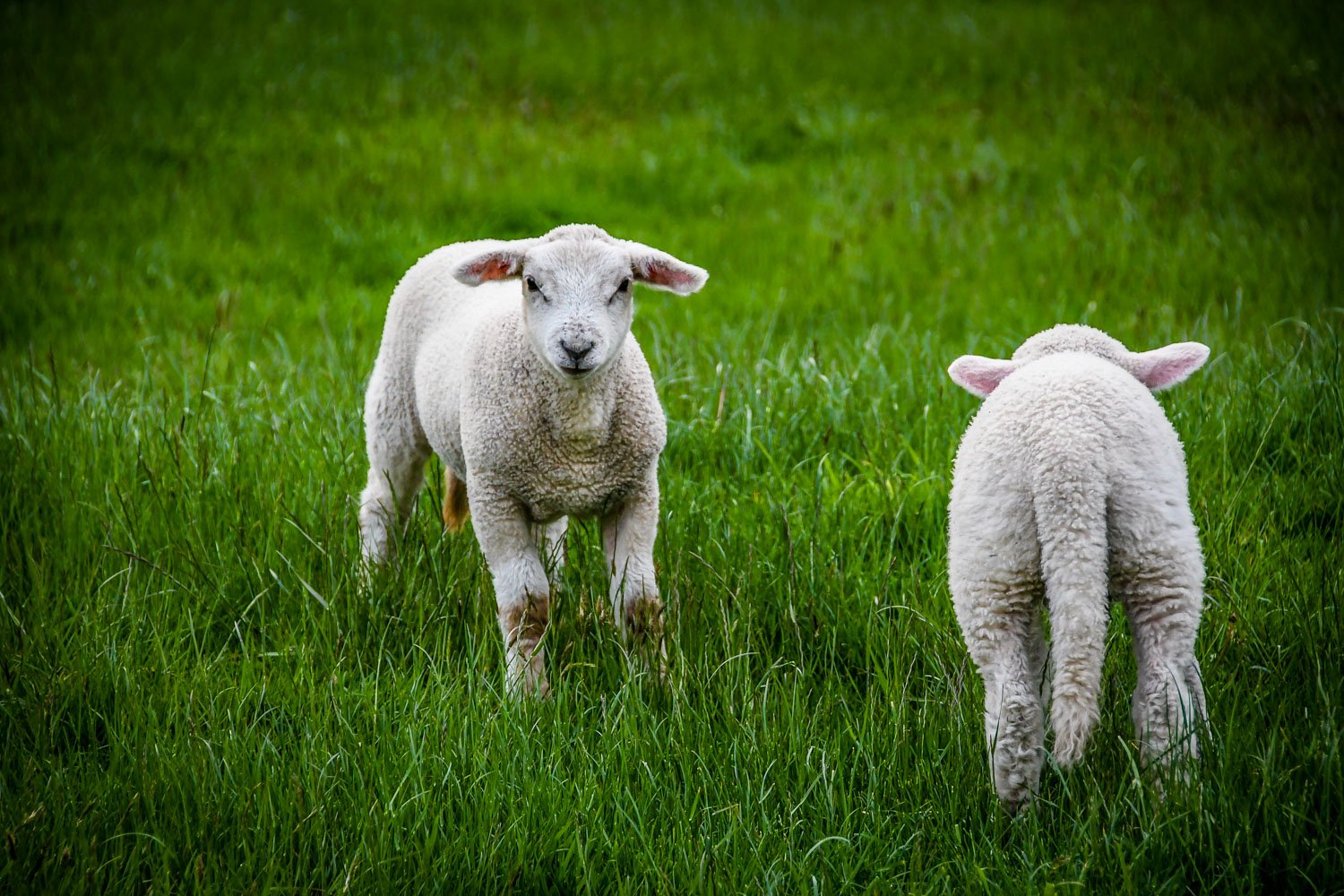
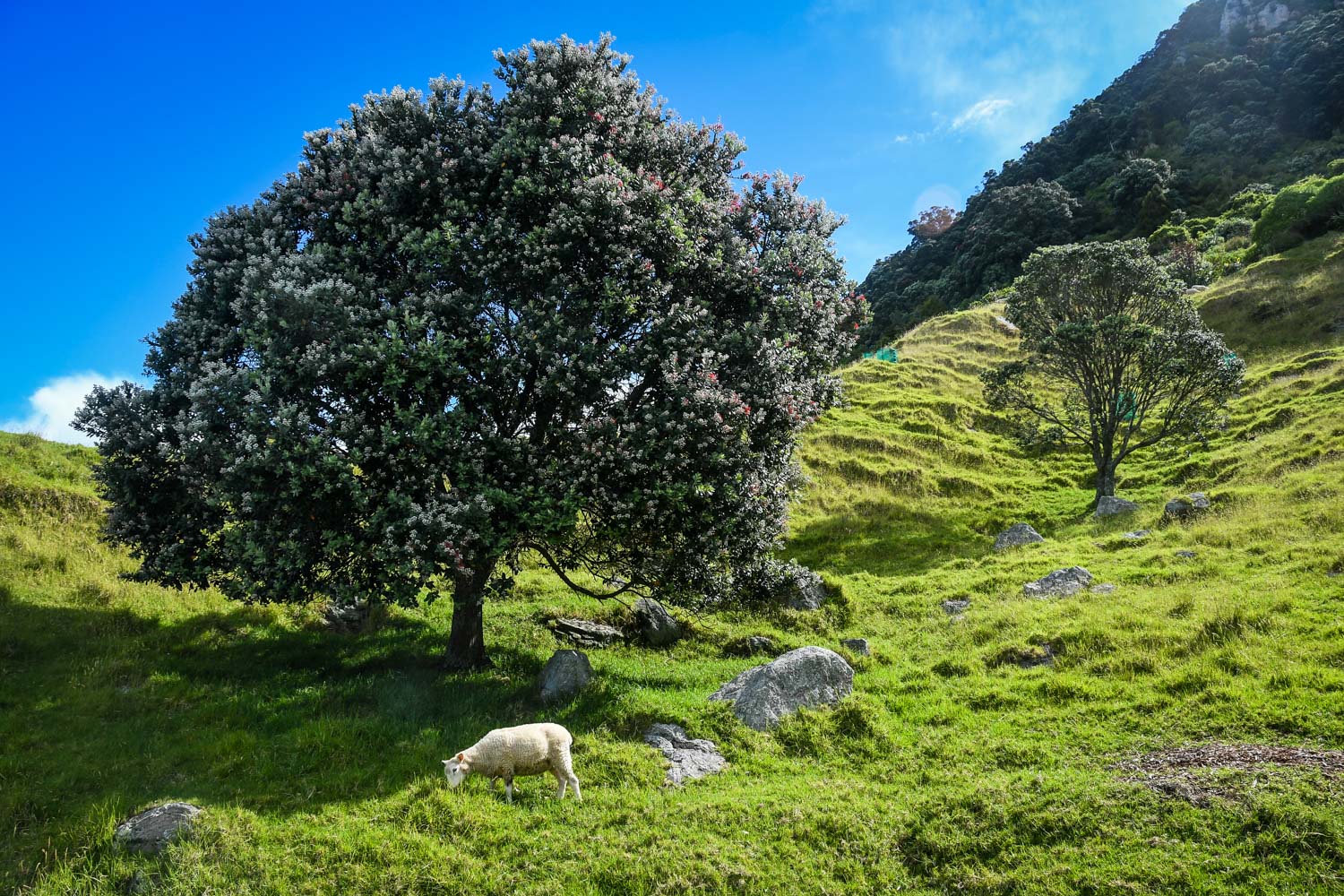
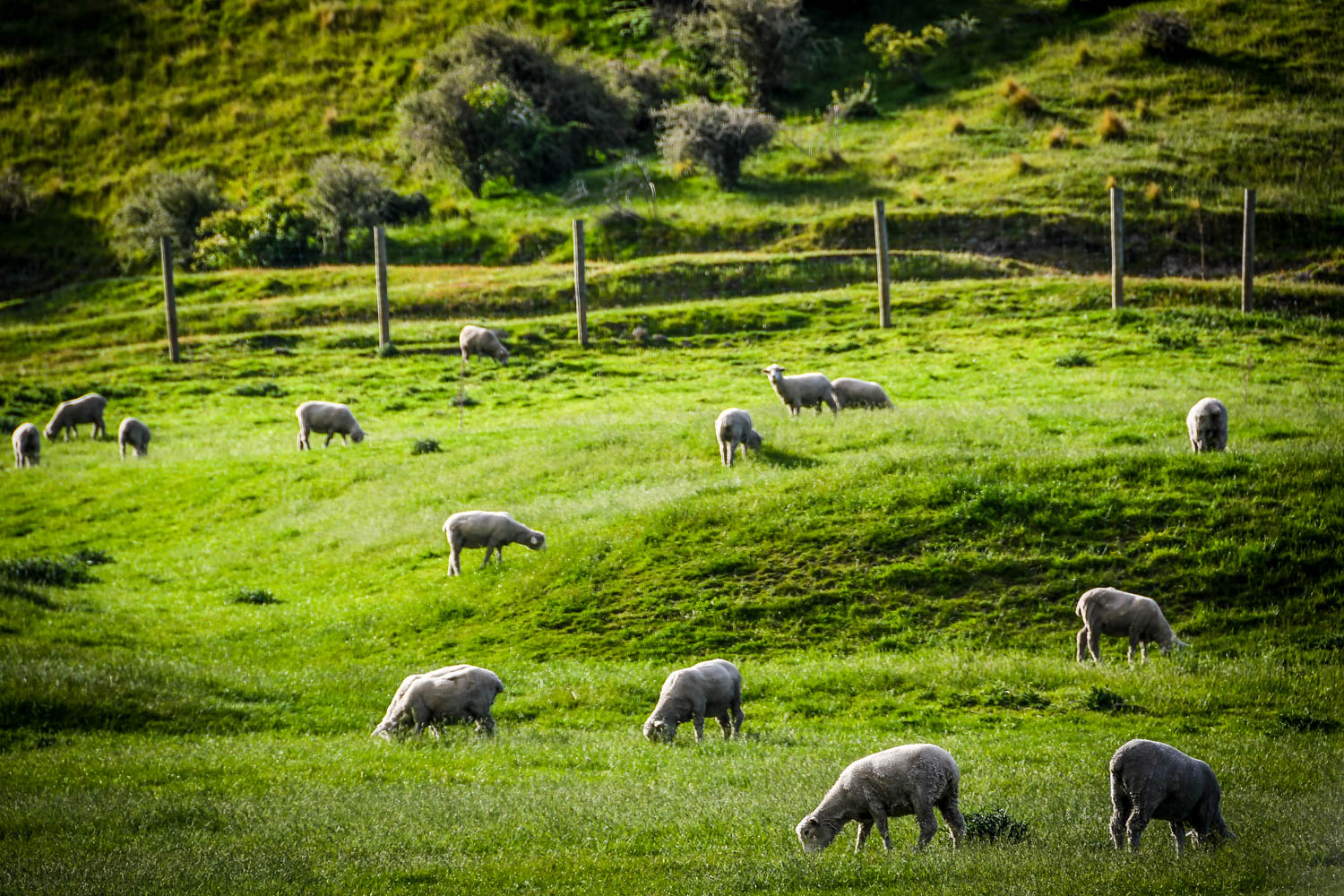
New Zealand looks so beautiful! I learned so many great tips and can’t wait to visit. The idea of going off the grid sounds kinda nice!